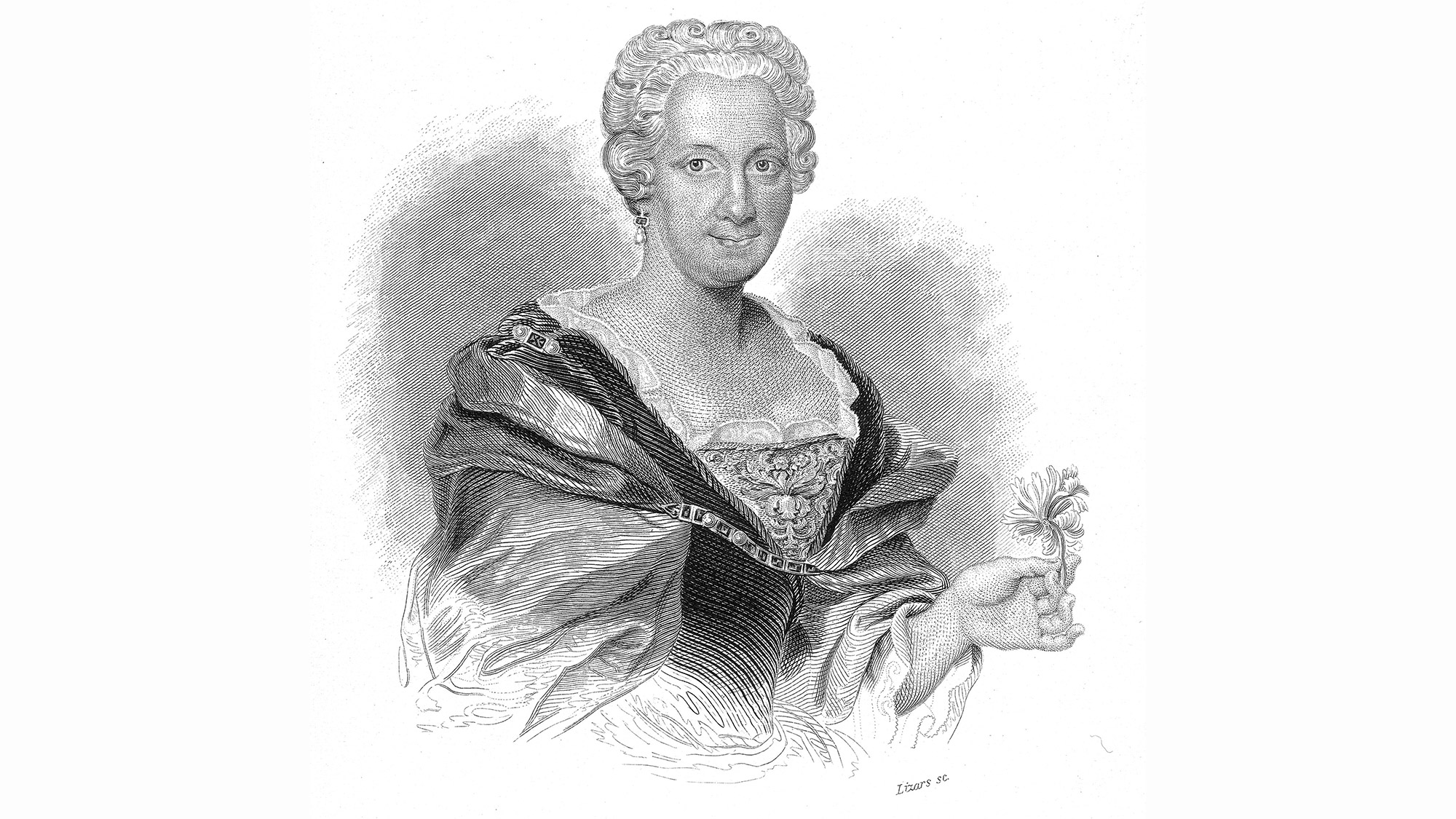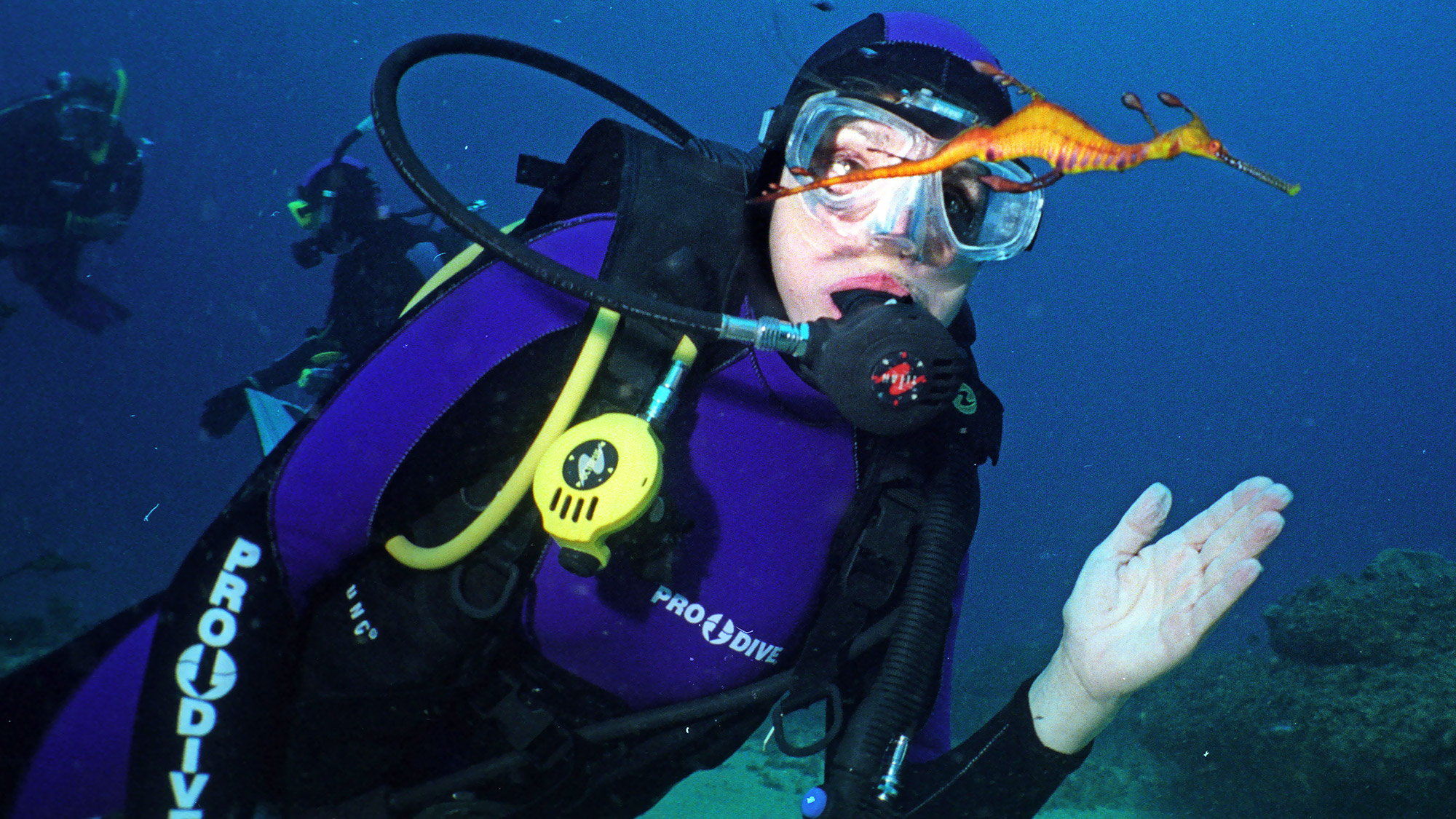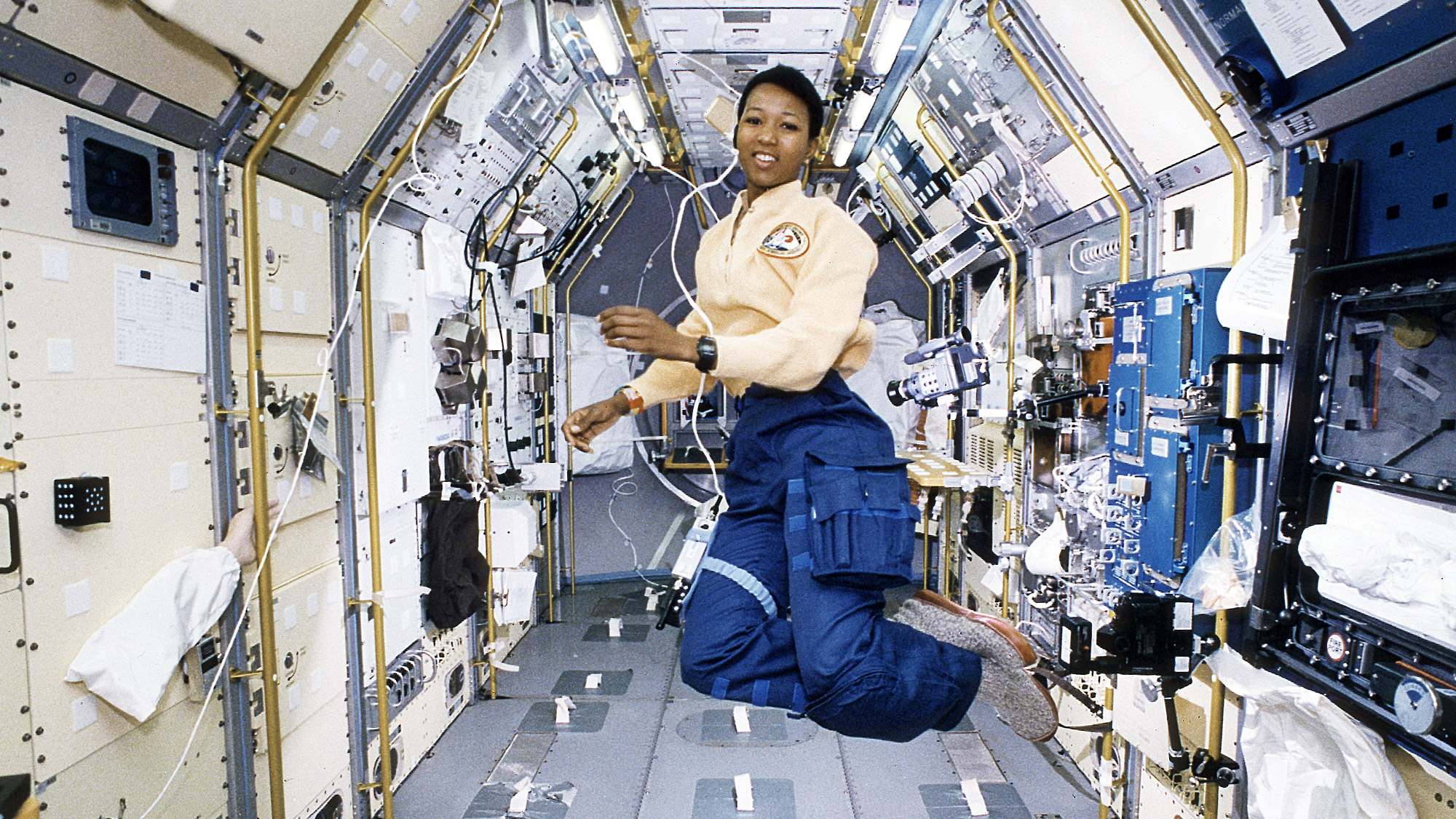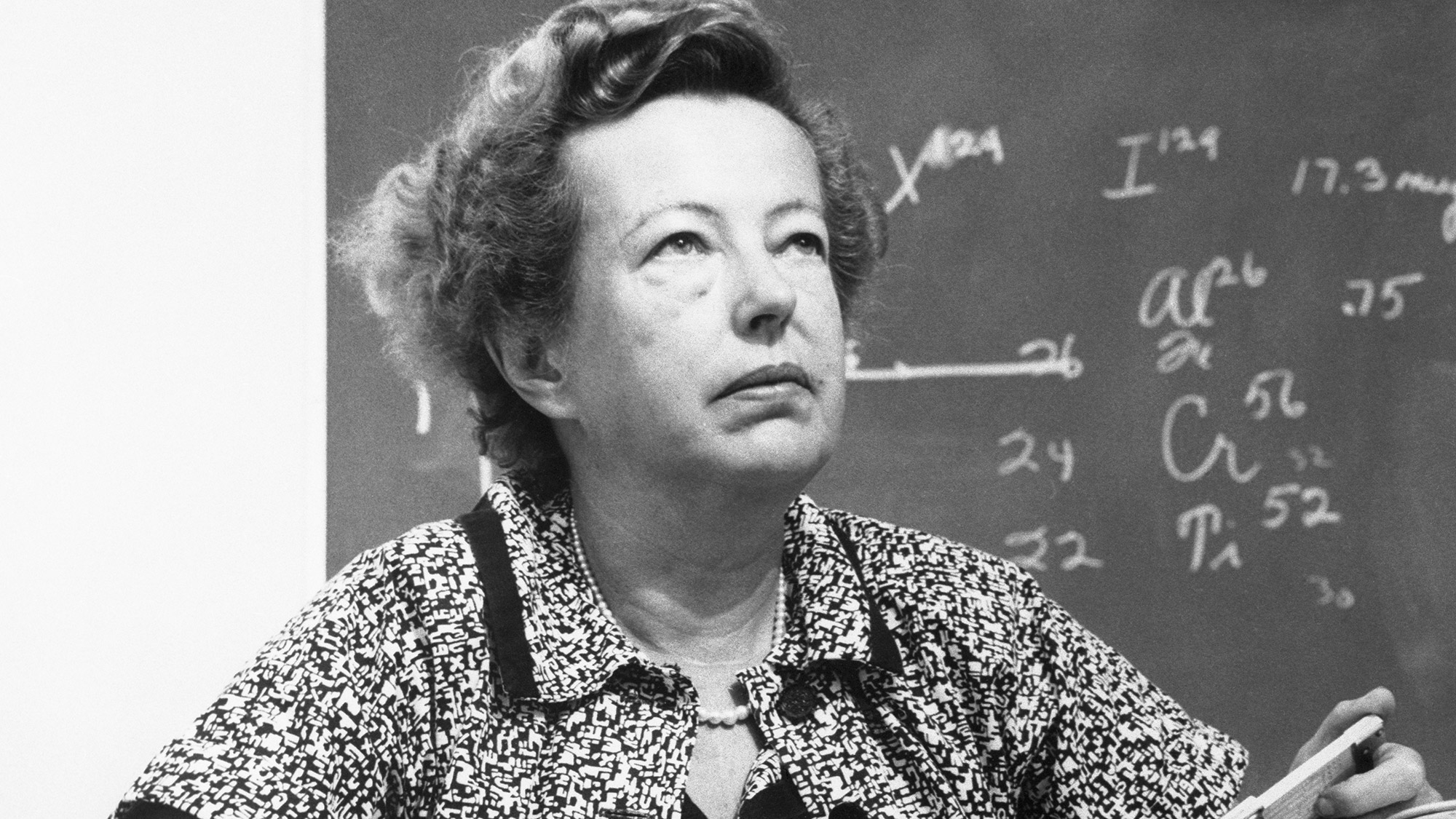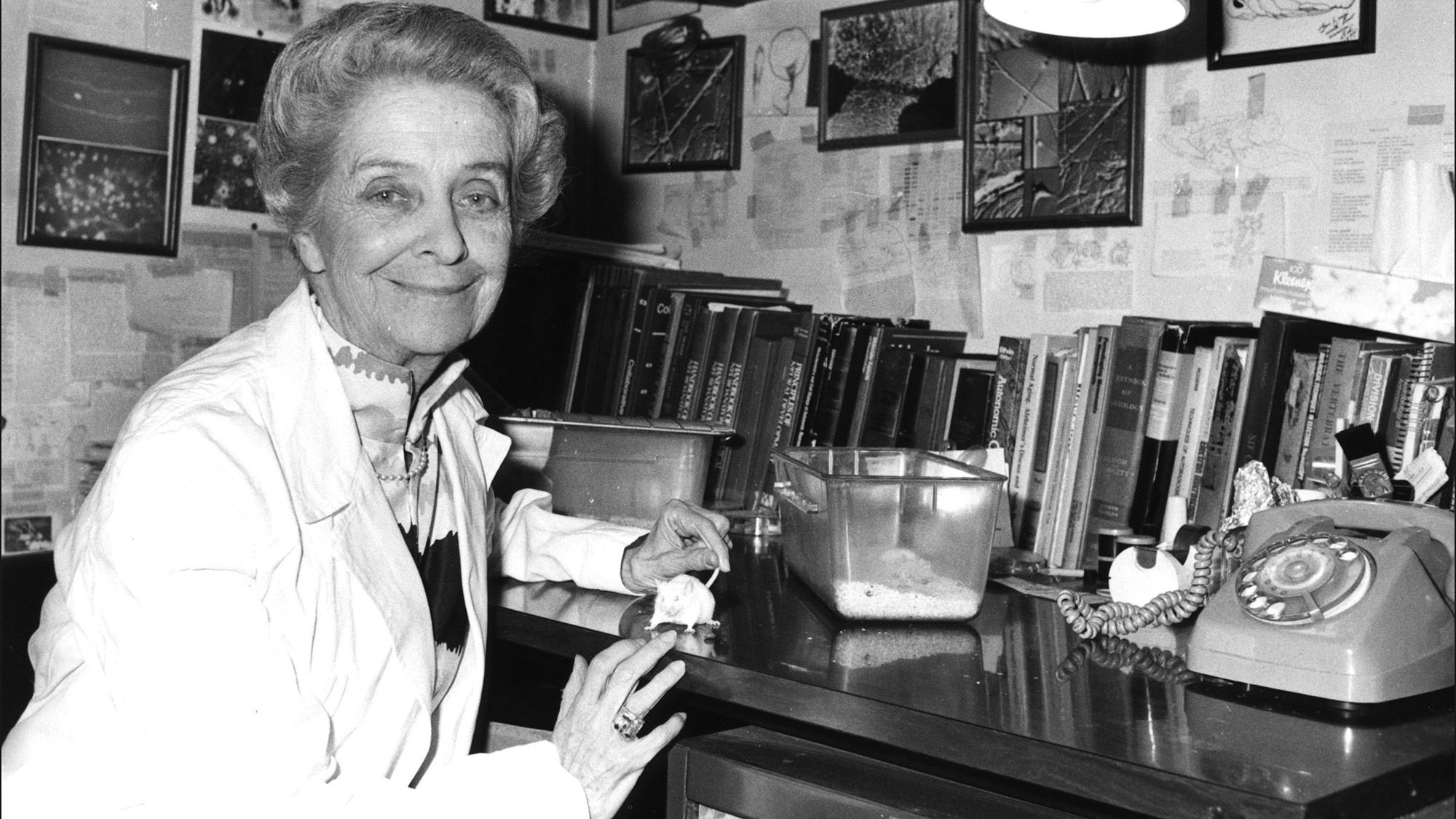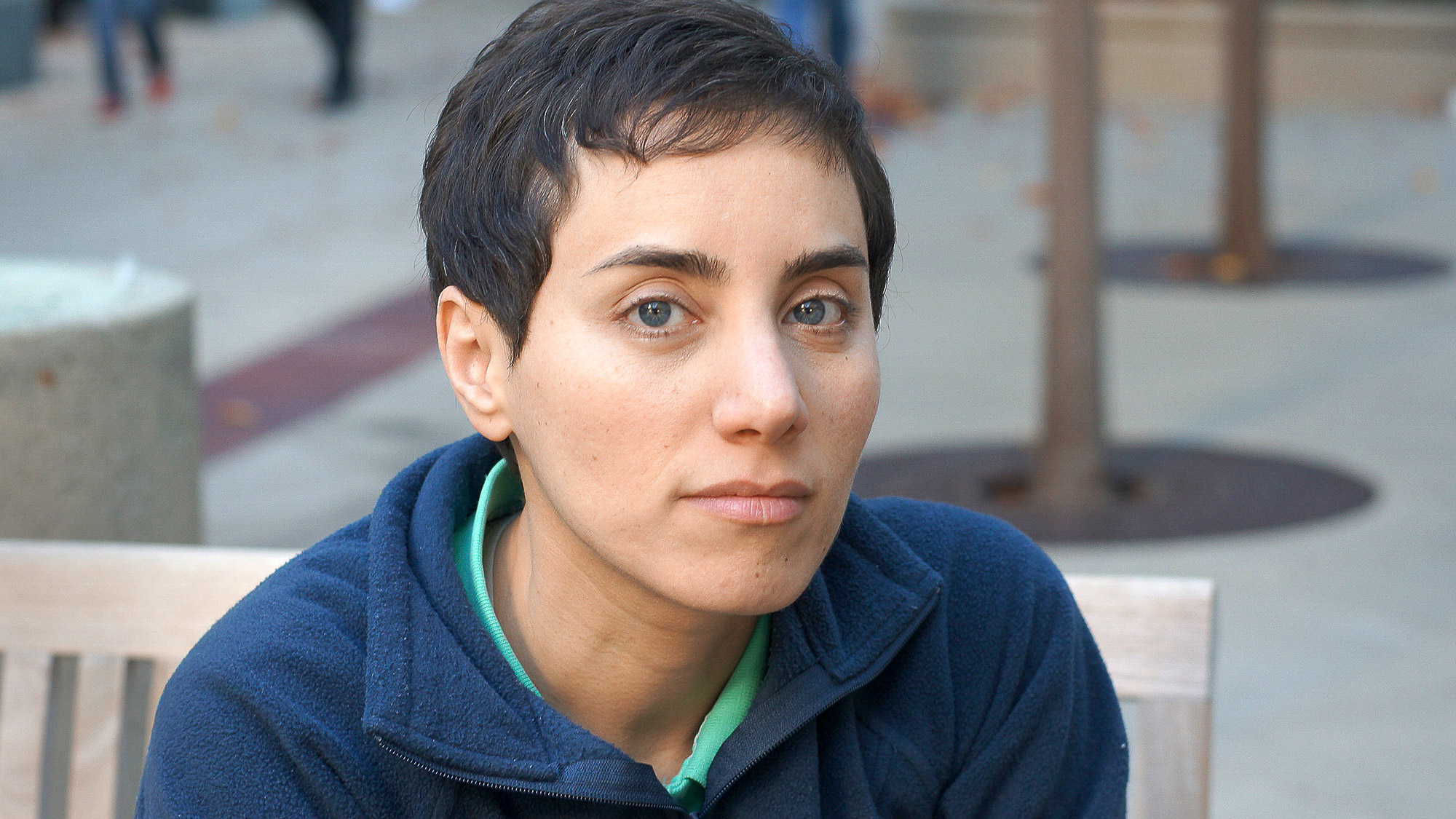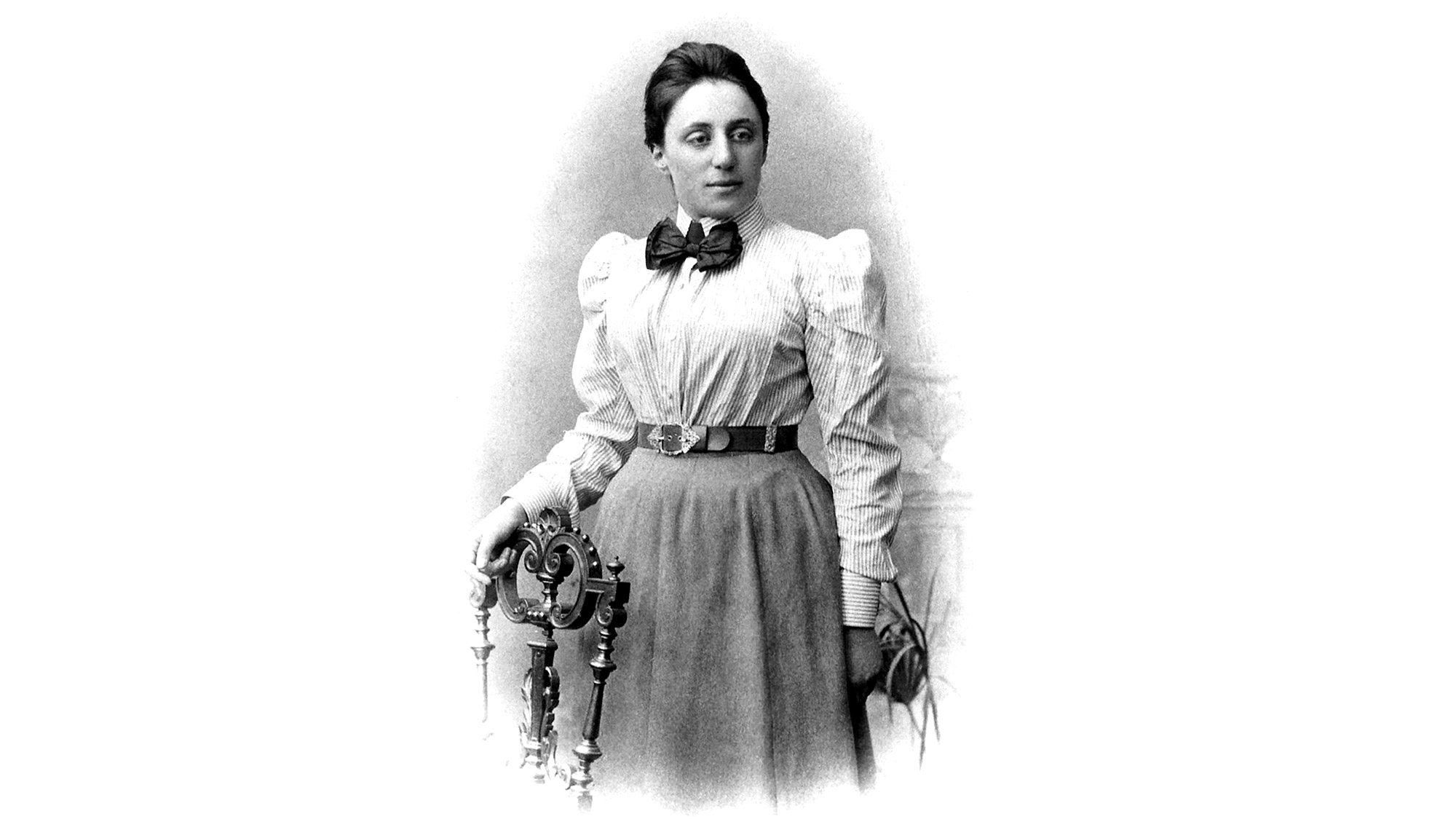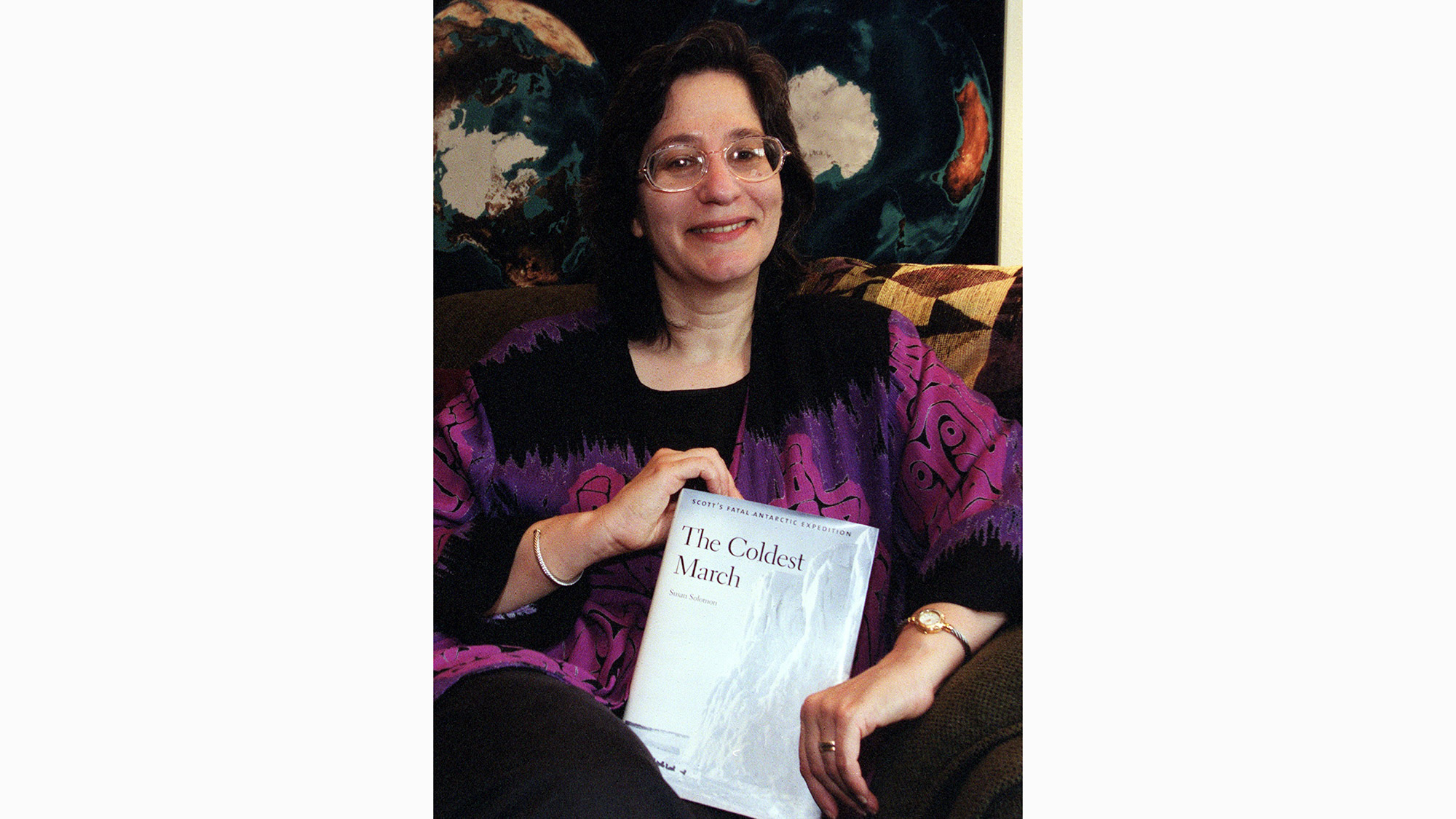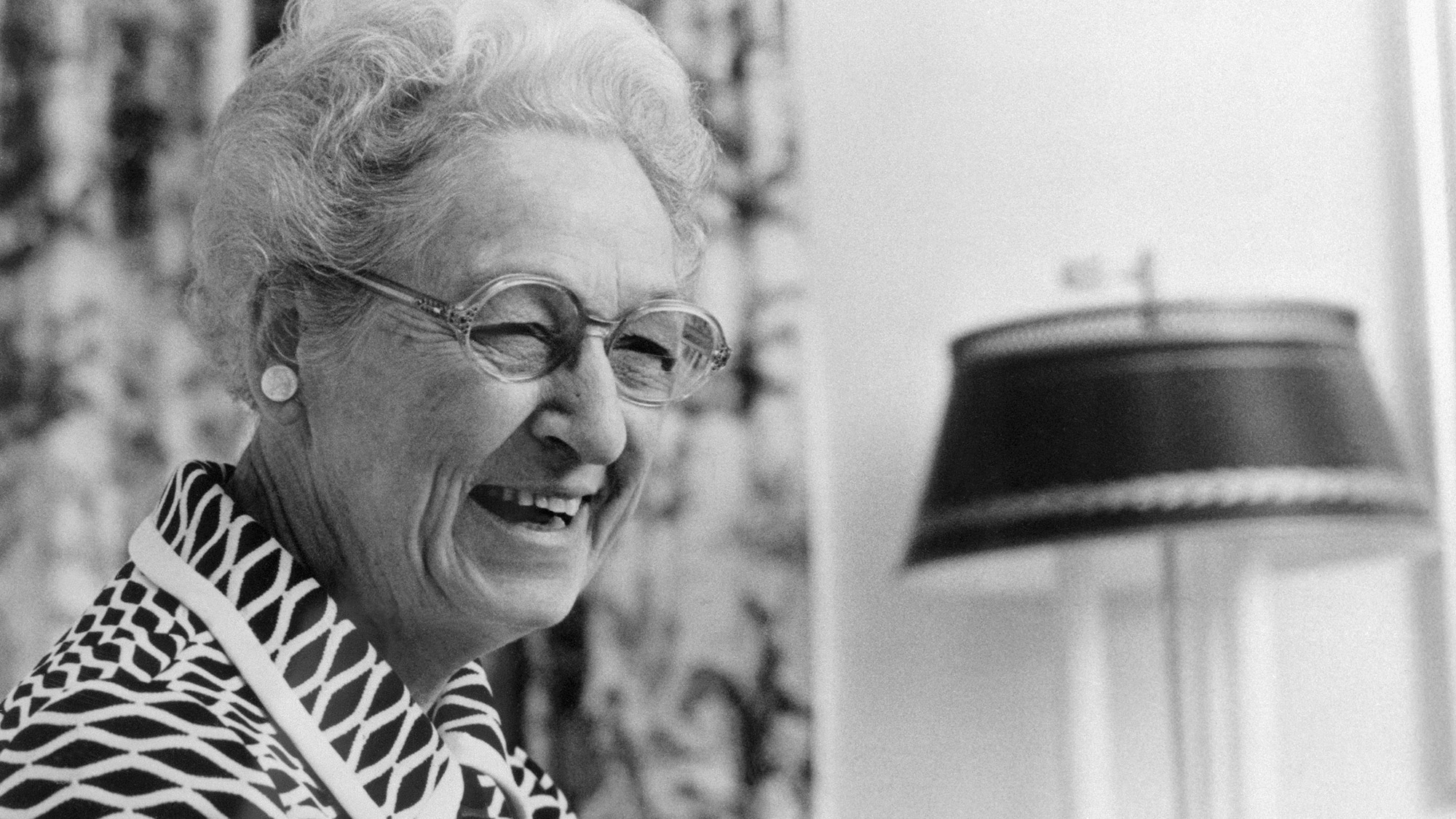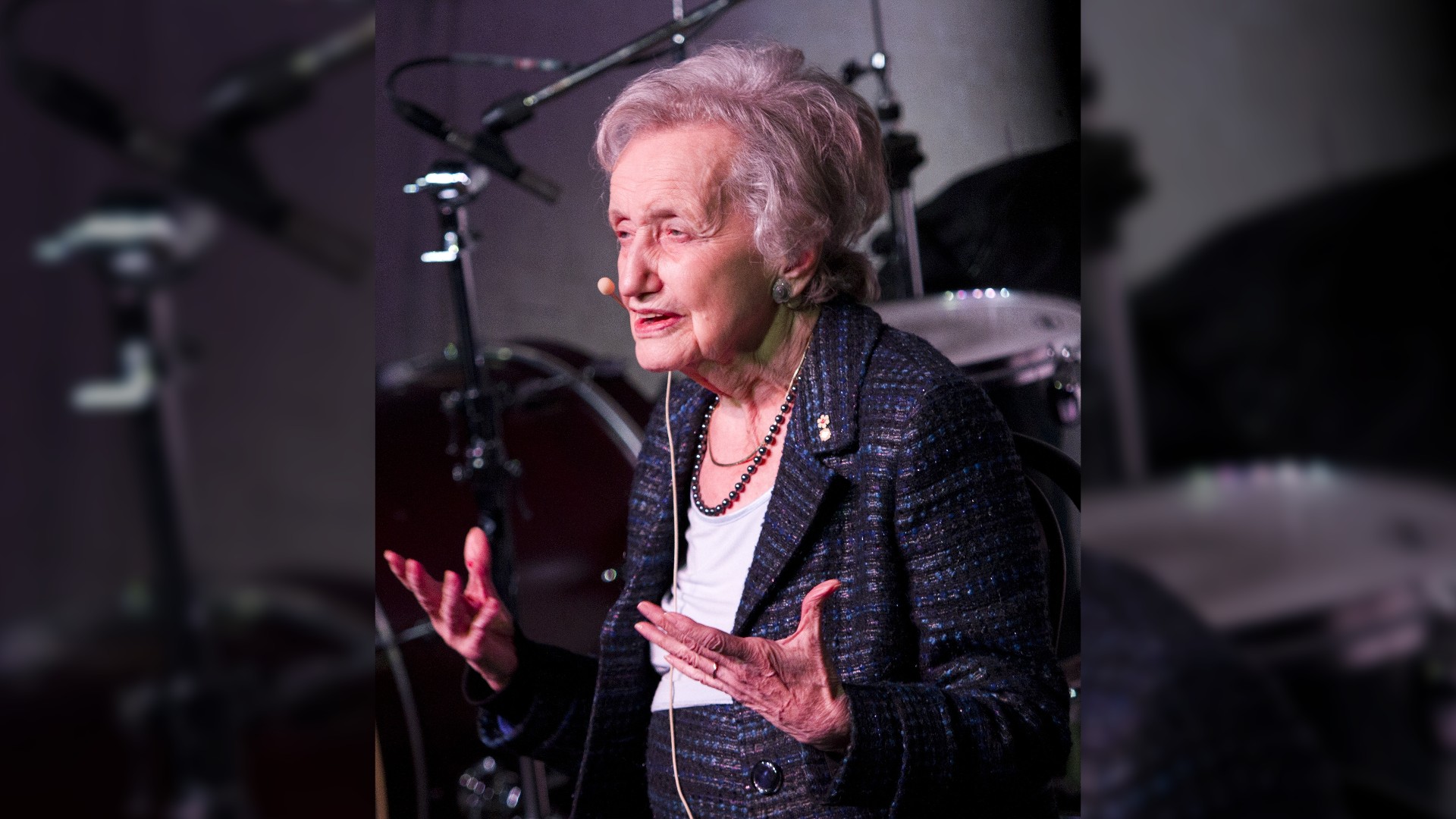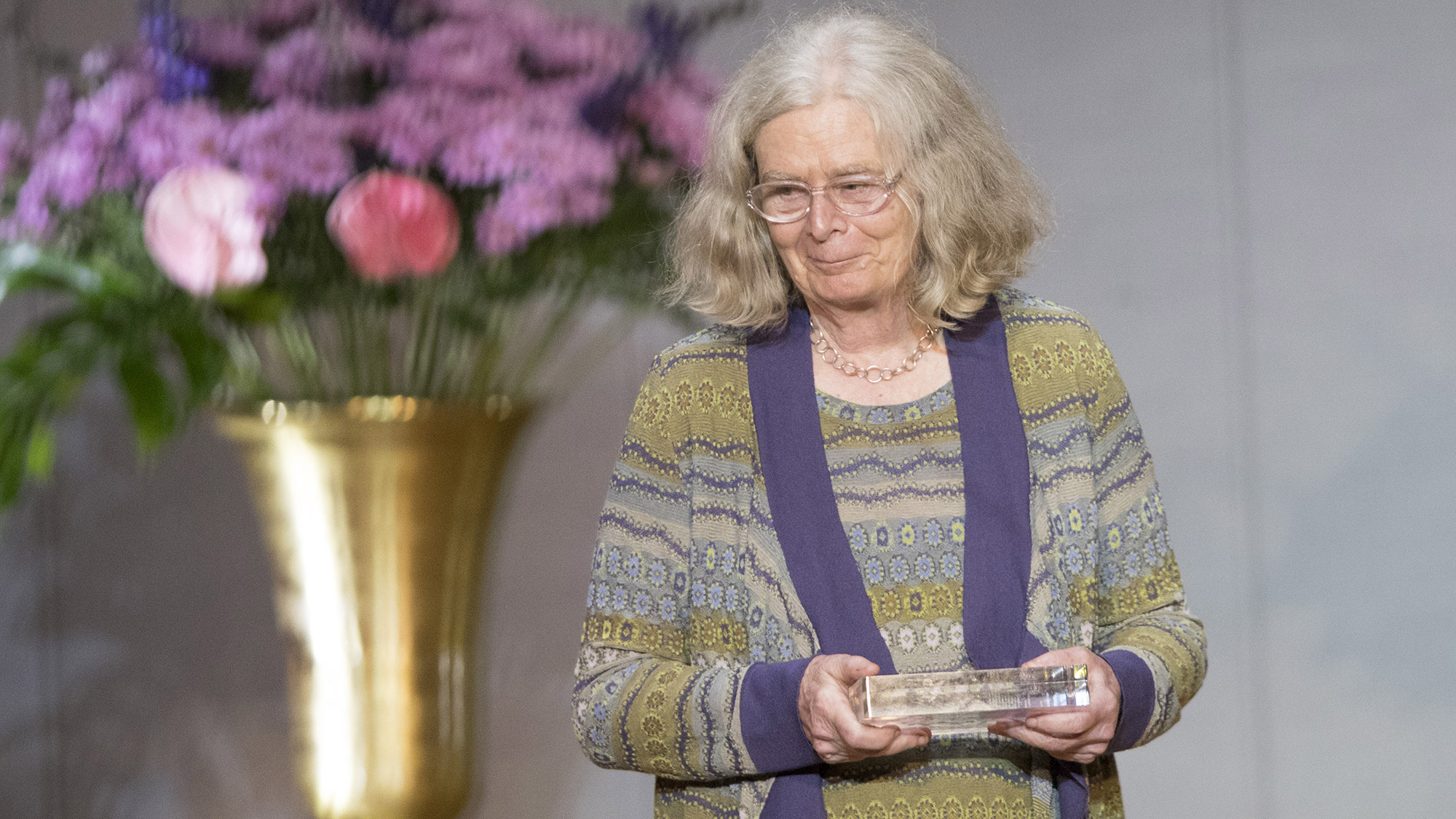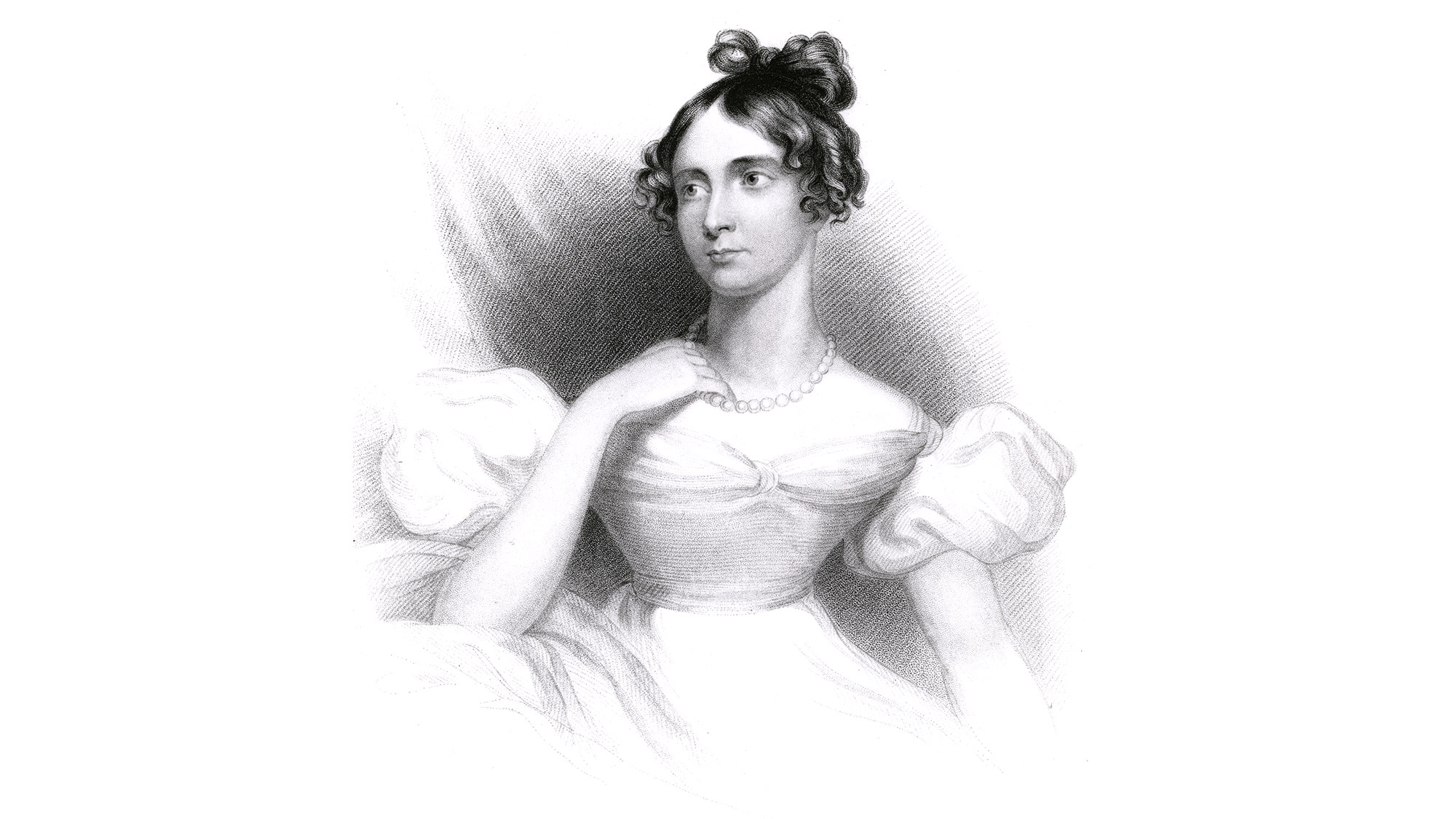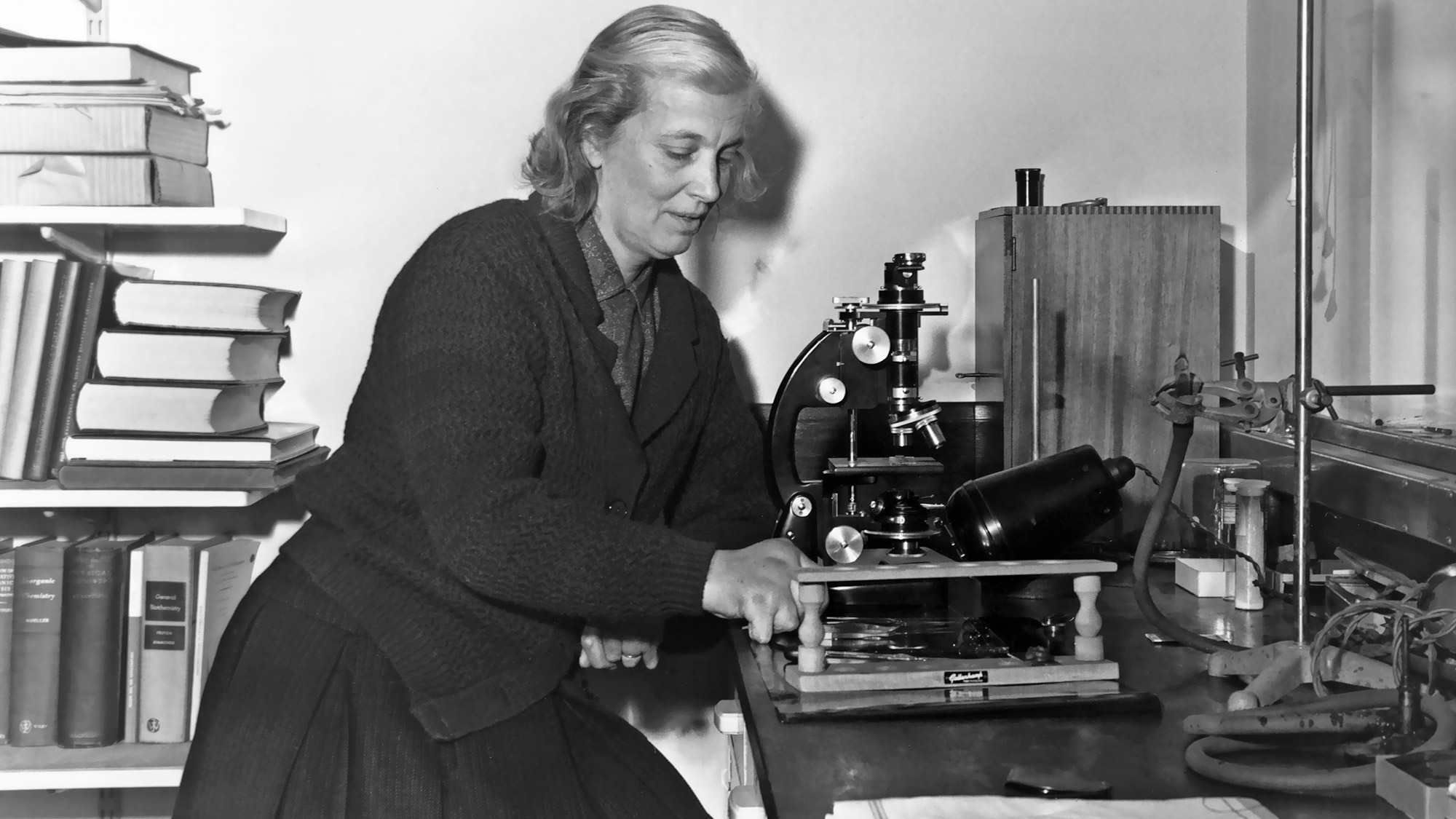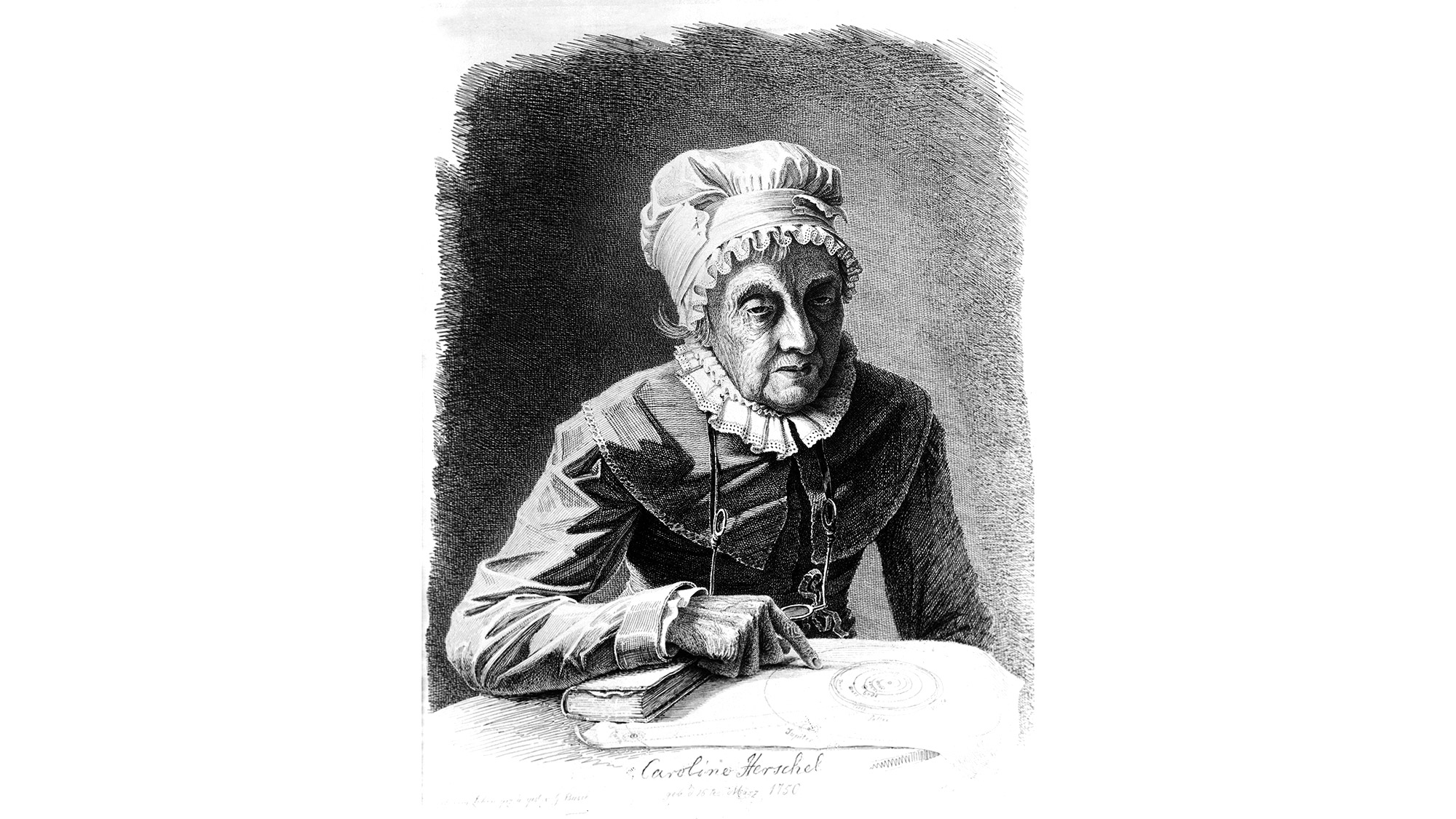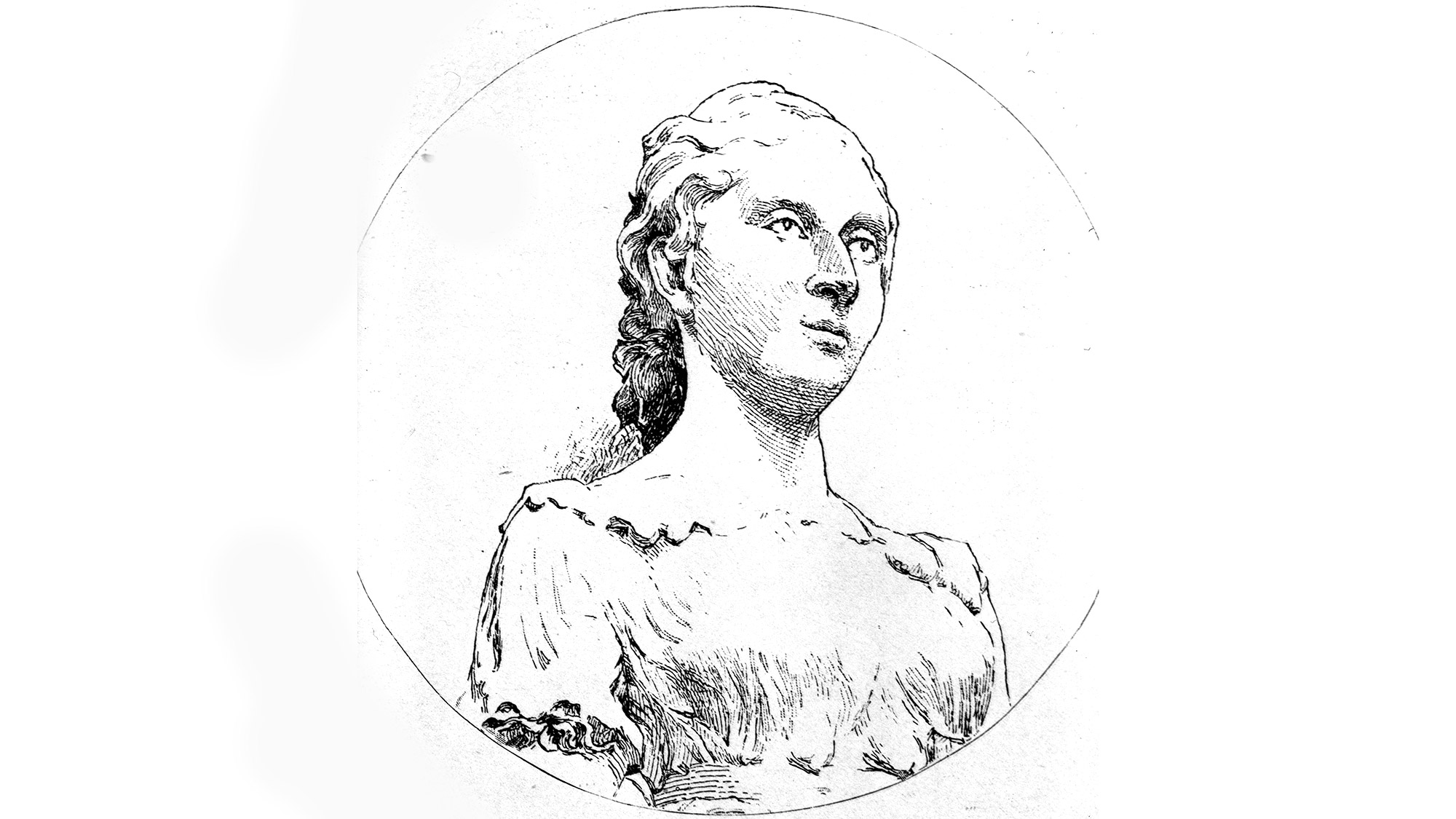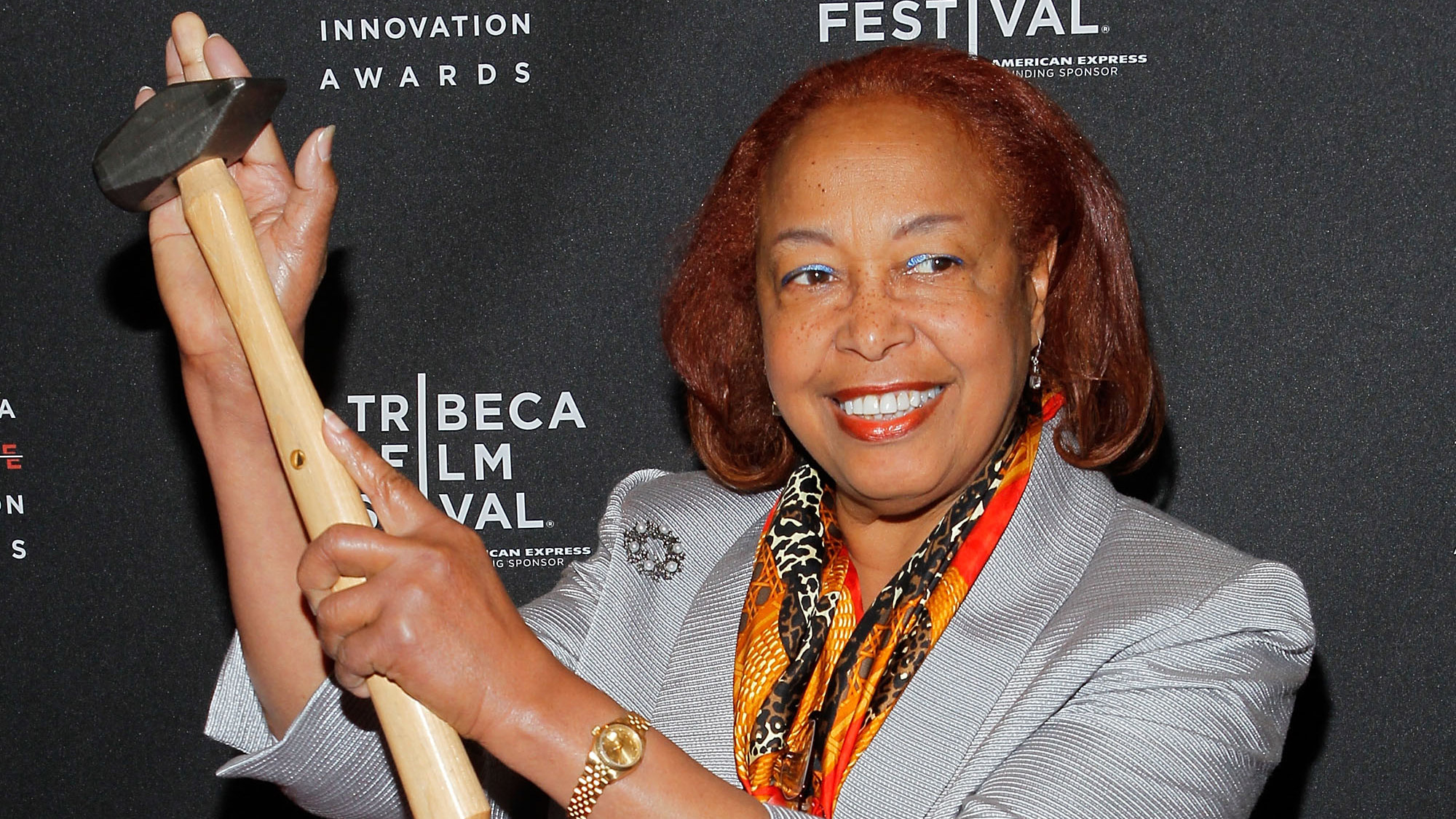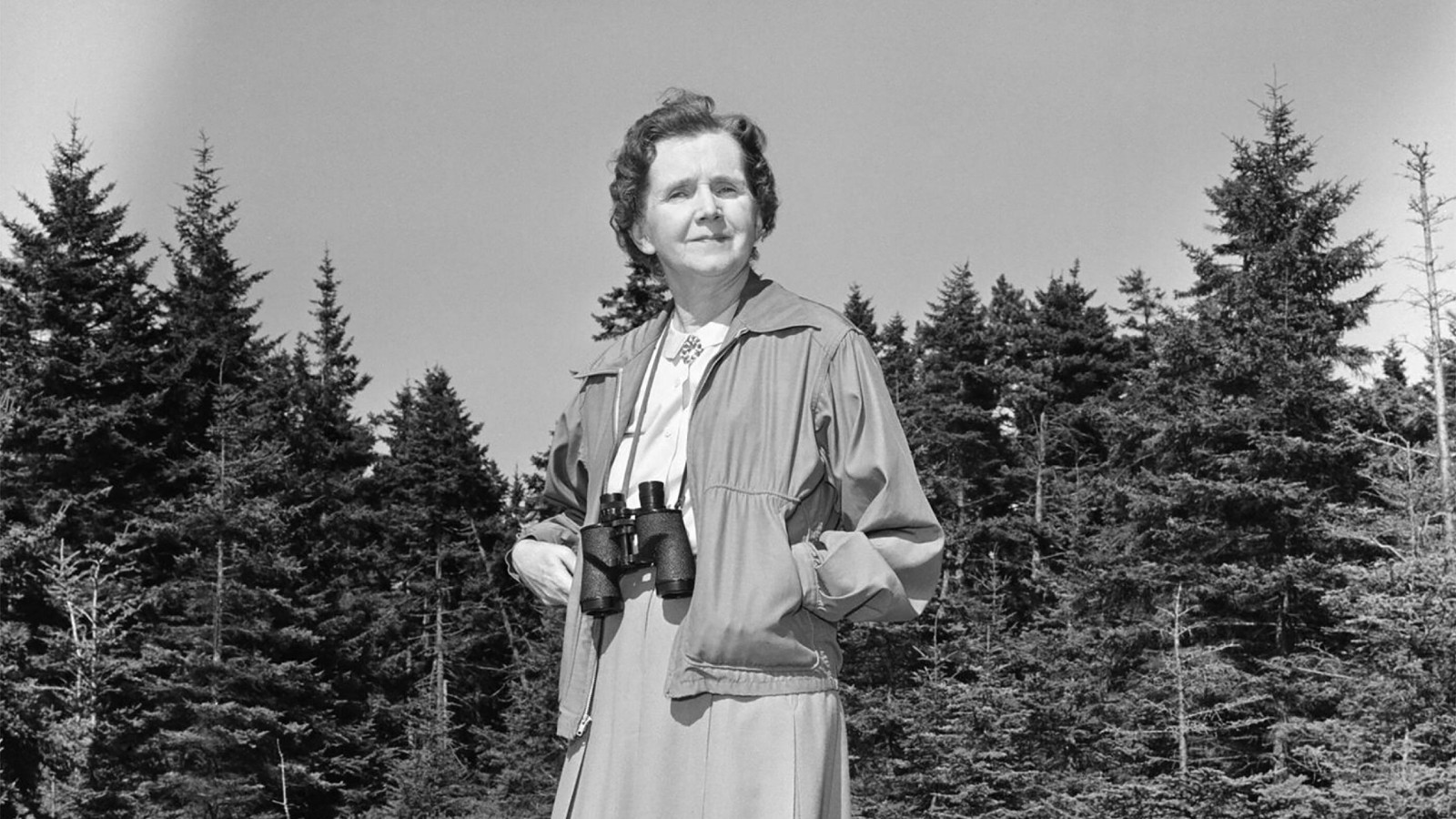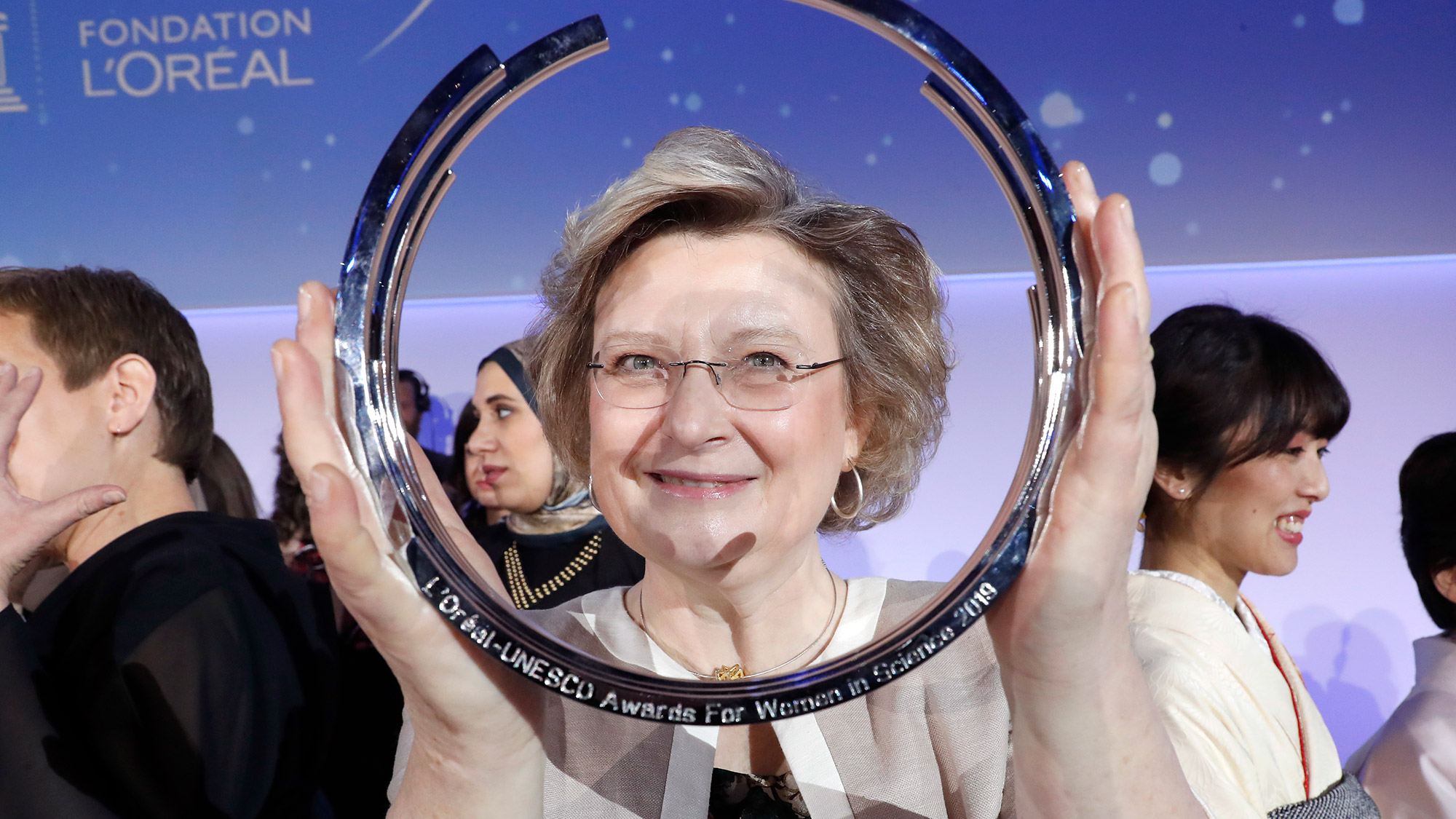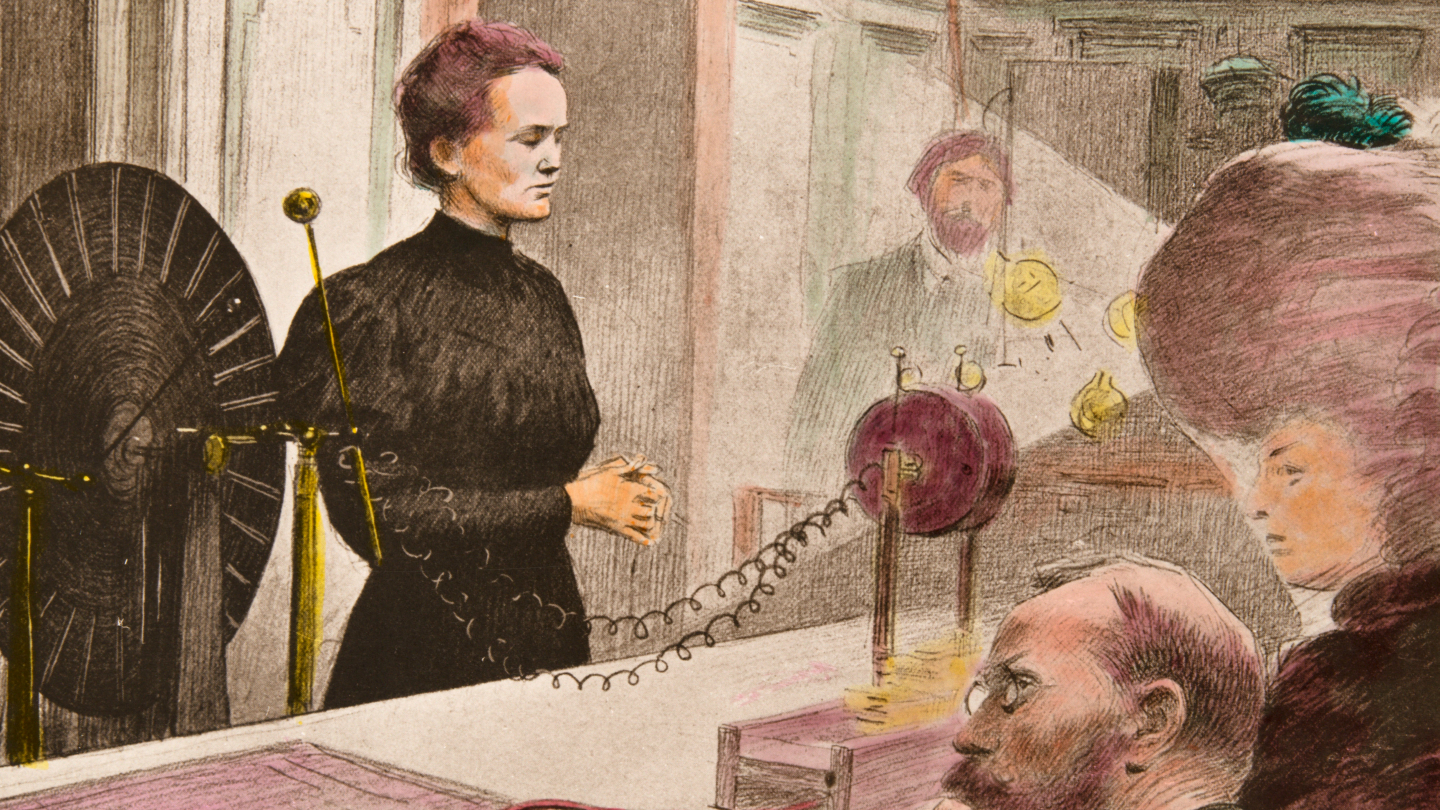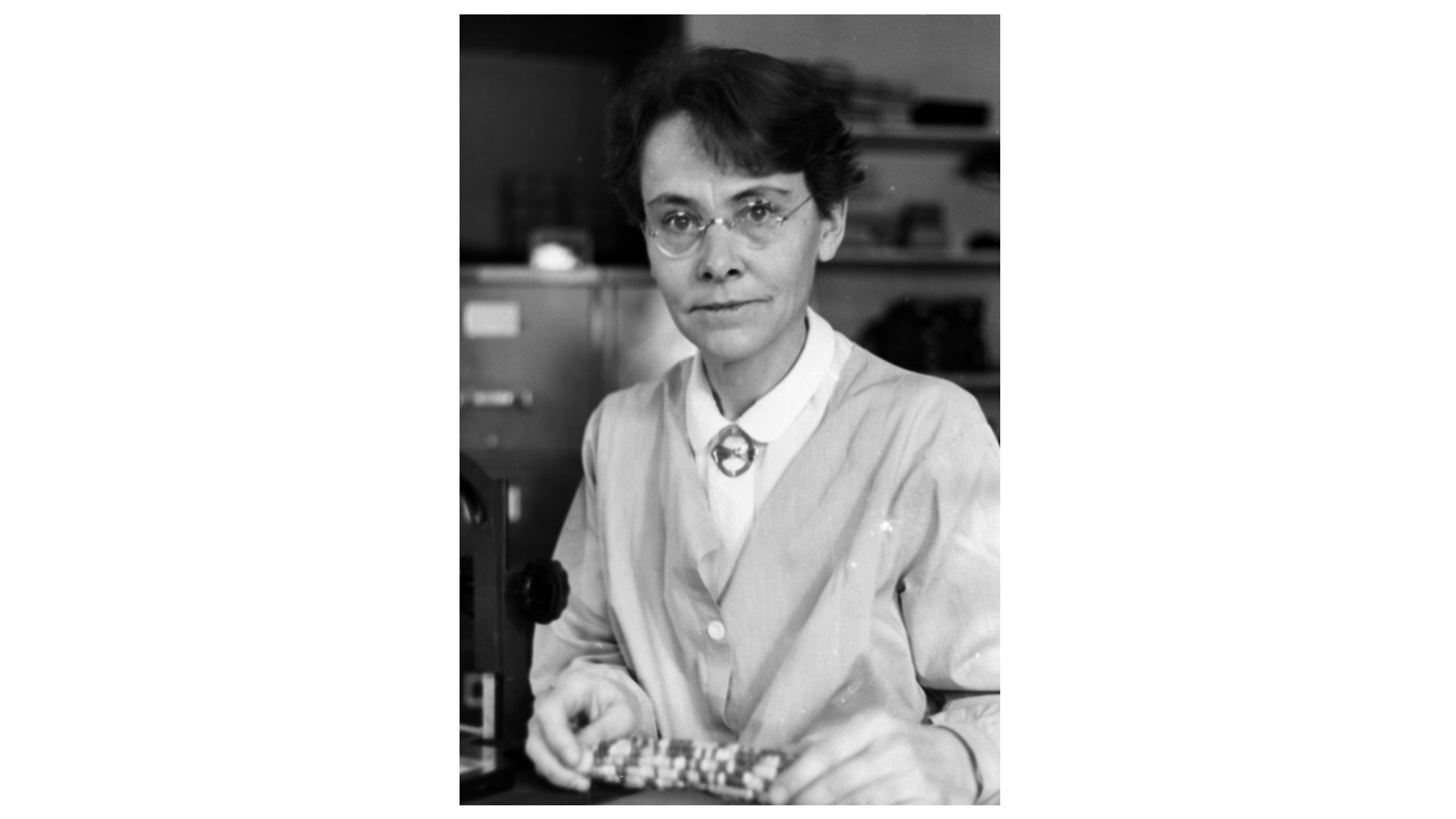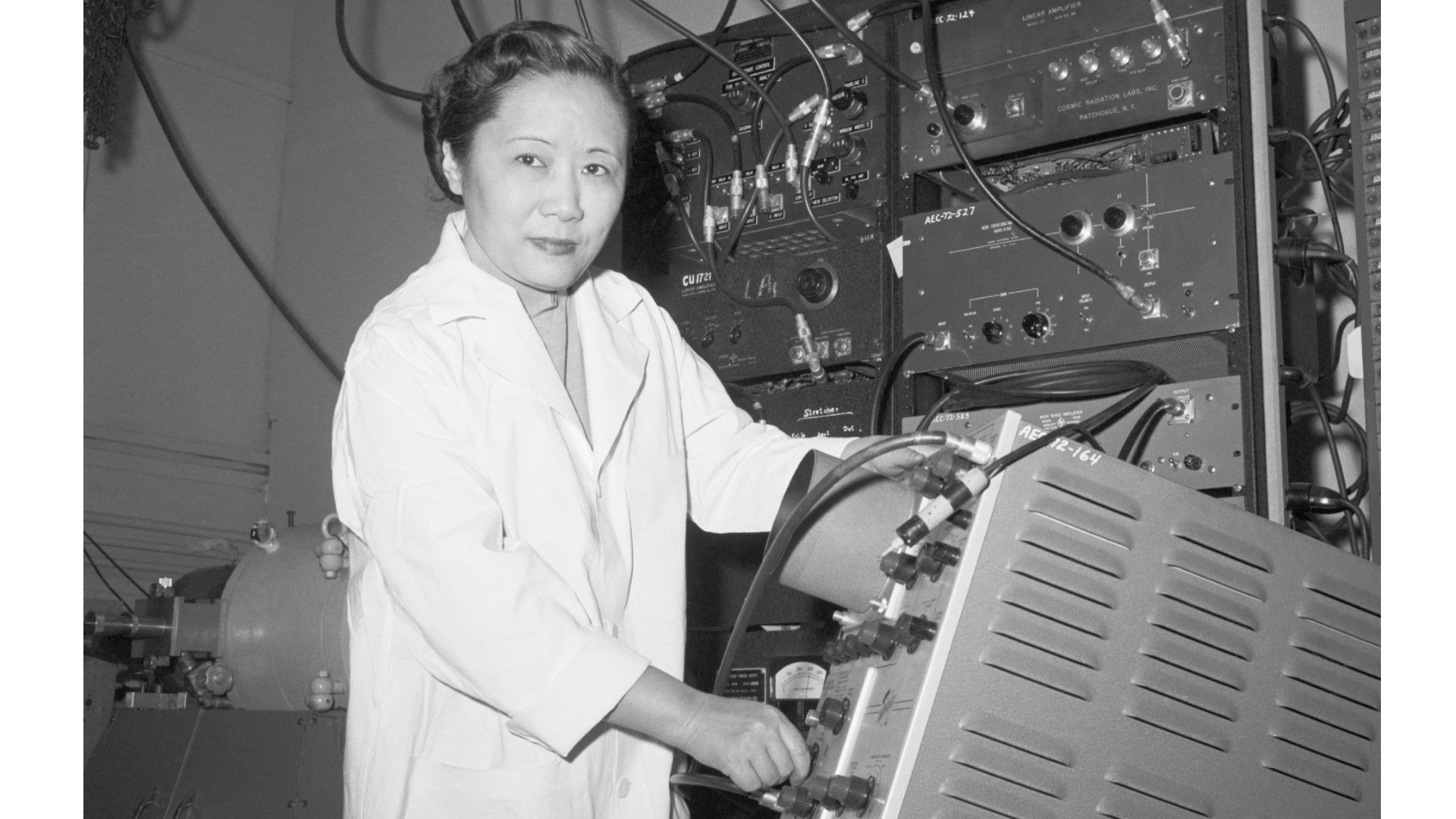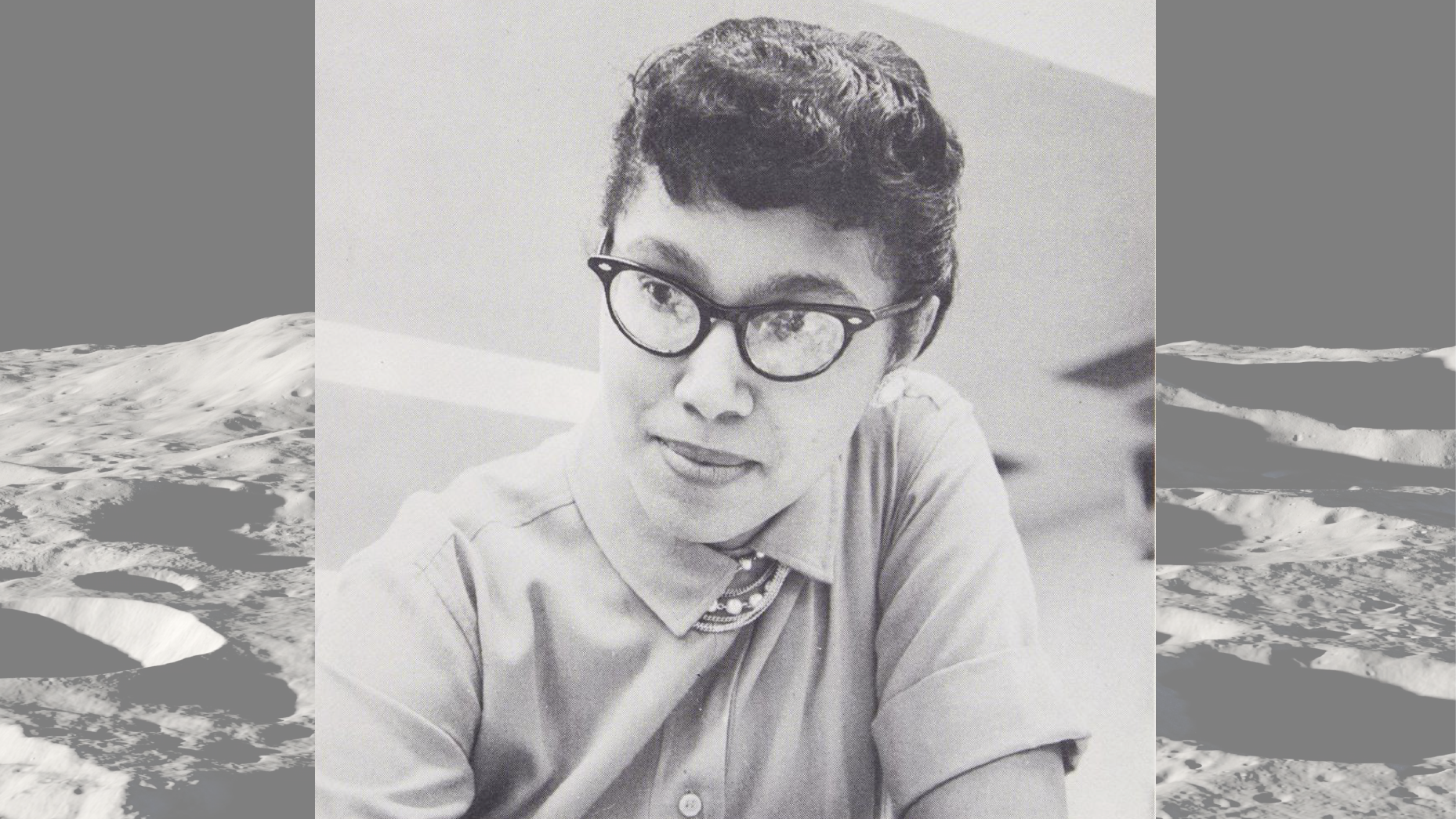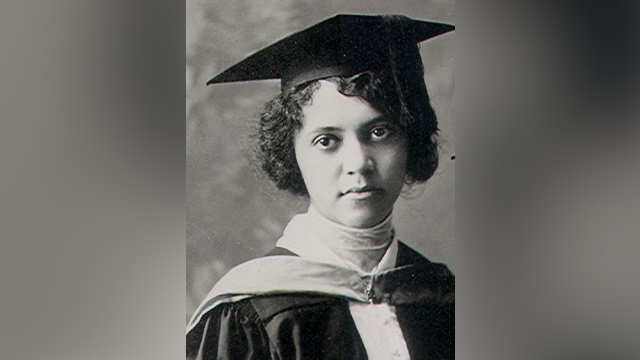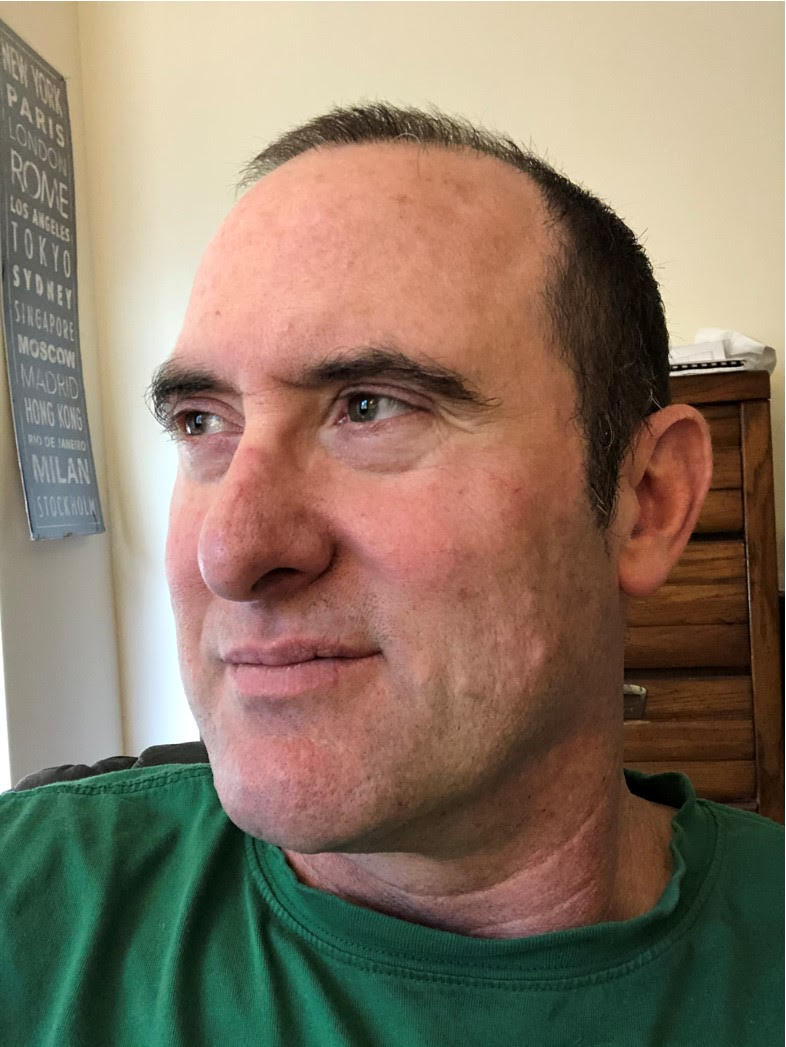30 amazing women in science and math
From the first woman to win a Nobel Prize to the discoverer of jumping genes, here are some of the women who have made major contributions to science and mathematics.
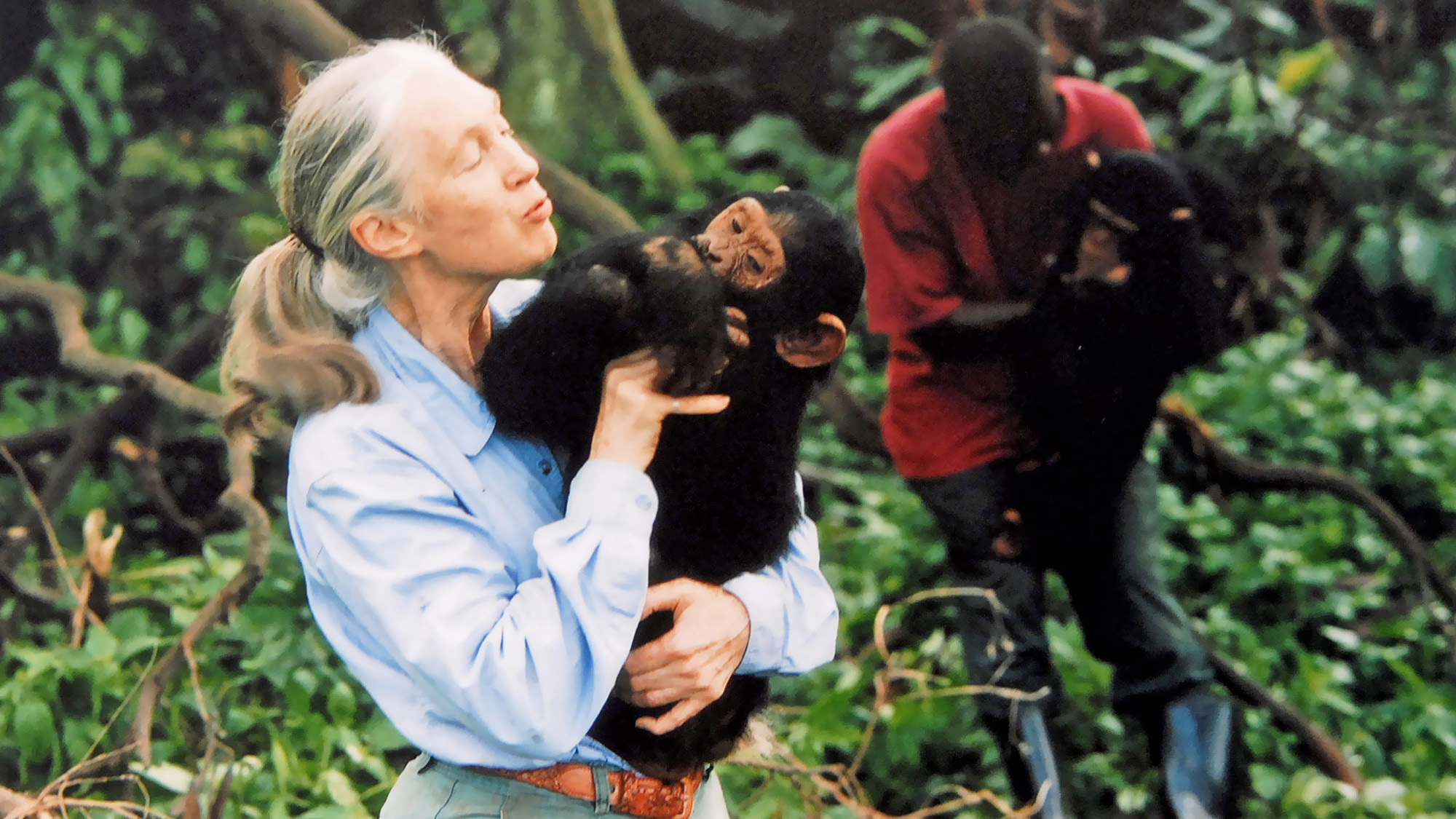
- Donna Strickland
- Rosalind Franklin
- Jennifer Doudna
- Sally Ride
- Katherine Johnson
- Mary Anning
- Maria Sibylla Merian
- Sylvia Earle
- Mae Jemison
- Maria Goeppert Mayer
- Rita Levi-Montalcini
- Maryam Mirzakhani
- Emmy Noether
- Susan Solomon
- Virginia Apgar
- Brenda Milner
- Karen Uhlenbeck
- Jane Goodall
- Ada Lovelace
- Dorothy Hodgkin
- Caroline Herschel
- Sophie Germain
- Patricia Bath
- Rachel Carson
- Ingrid Daubechies
- Marie Curie
- Barbara McClintock
- Chien-Shiung Wu
- Melba Roy Mouton
- Alice Ball
From the beginning, women have made significant contributions to the fields of mathematics and science. But despite the fact that these pioneering women have changed the way we live in and think about the world, you might not be familiar with their names and faces. From the first woman to earn a Nobel Prize to a legendary primatologist, here are 30 amazing women who changed math and science forever.
Donna Strickland (Born in 1959)
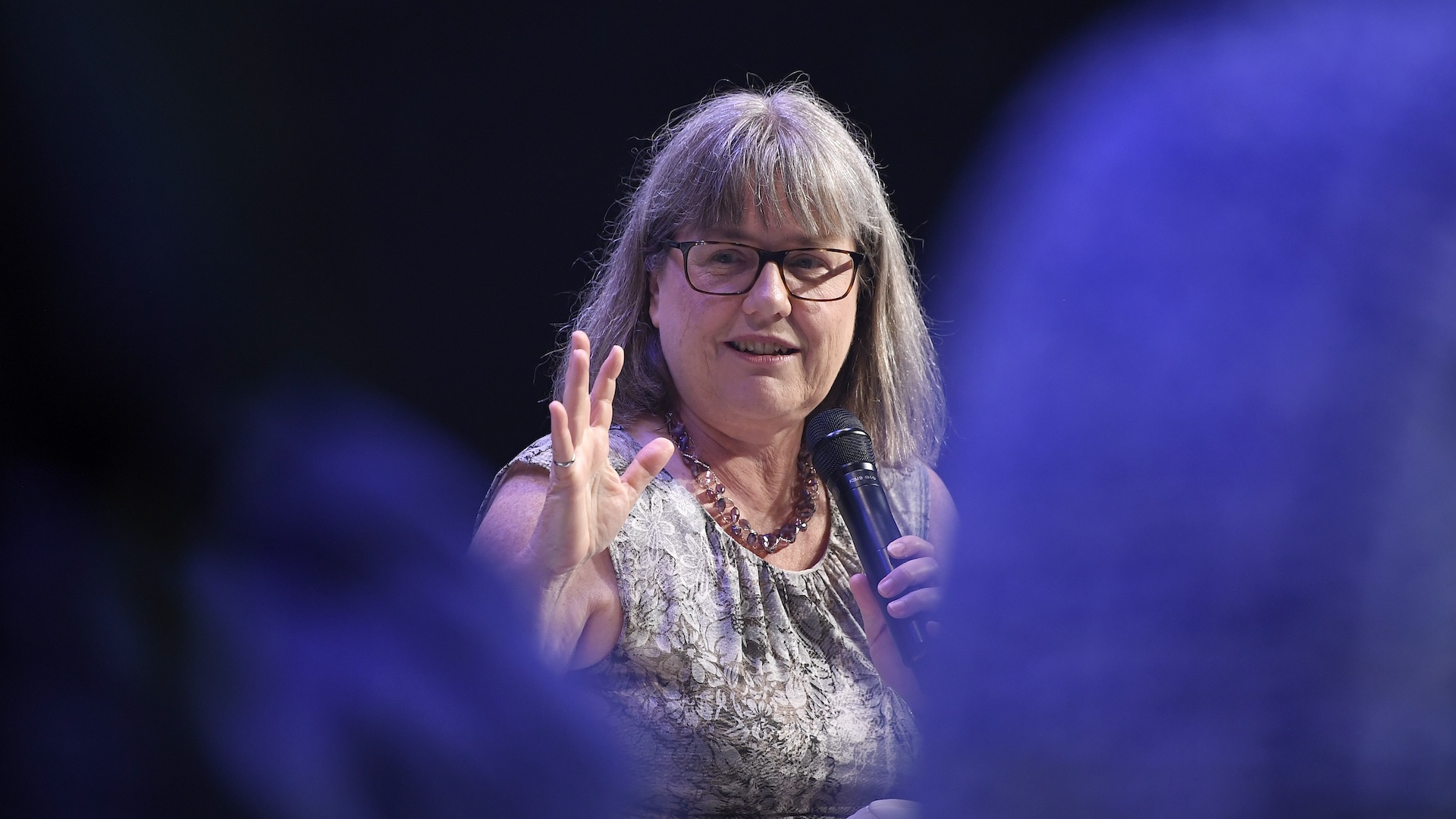
Donna Strickland won the Nobel Prize in physics in 2018 for her role in developing a "method of generating high-intensity, ultra-short optical pulses," according to the Nobel Foundation. She was born in Guelph, Ontario, and dove into the world of laser and electro-optics while a student at McMaster University. In 1985, while getting her doctorate at the University of Rochester in New York, Strickland and French physicist Gérard Mourou created ultrashort, high-intensity laser pulses known as chirped pulse amplification (CPA), which has a variety of uses, including in corrective eye surgeries such as LASIK.
With CPA, laser pulses are stretched in time, amplified and compressed. This enables the pulse to be squished in time, and thus made shorter, so the same amount of light is stuffed into a tiny space and its intensity skyrockets.
"It took me a year to build the laser," Strickland wrote in an op-ed. "We proved that we could increase laser intensity by orders of magnitude. In fact, CPA led to the most intense laser pulses ever recorded. Our findings changed the world's understanding of how atoms interact with high-intensity light."
Strickland shared the 2018 prize with Mourou and physicist Arthur Ashkin for his work on optical tweezers, or laser beam "fingers" that could grasp particles, atoms, molecules and even living cells. At the time, she was the first woman in 55 years to win the Nobel Prize in physics. Moreover, she was only the third woman ever to win the Nobel Prize in physics, with the other two being Marie Curie in 1903 and Maria Goeppert-Mayer in 1963.
Rosalind Franklin (1920-1958)
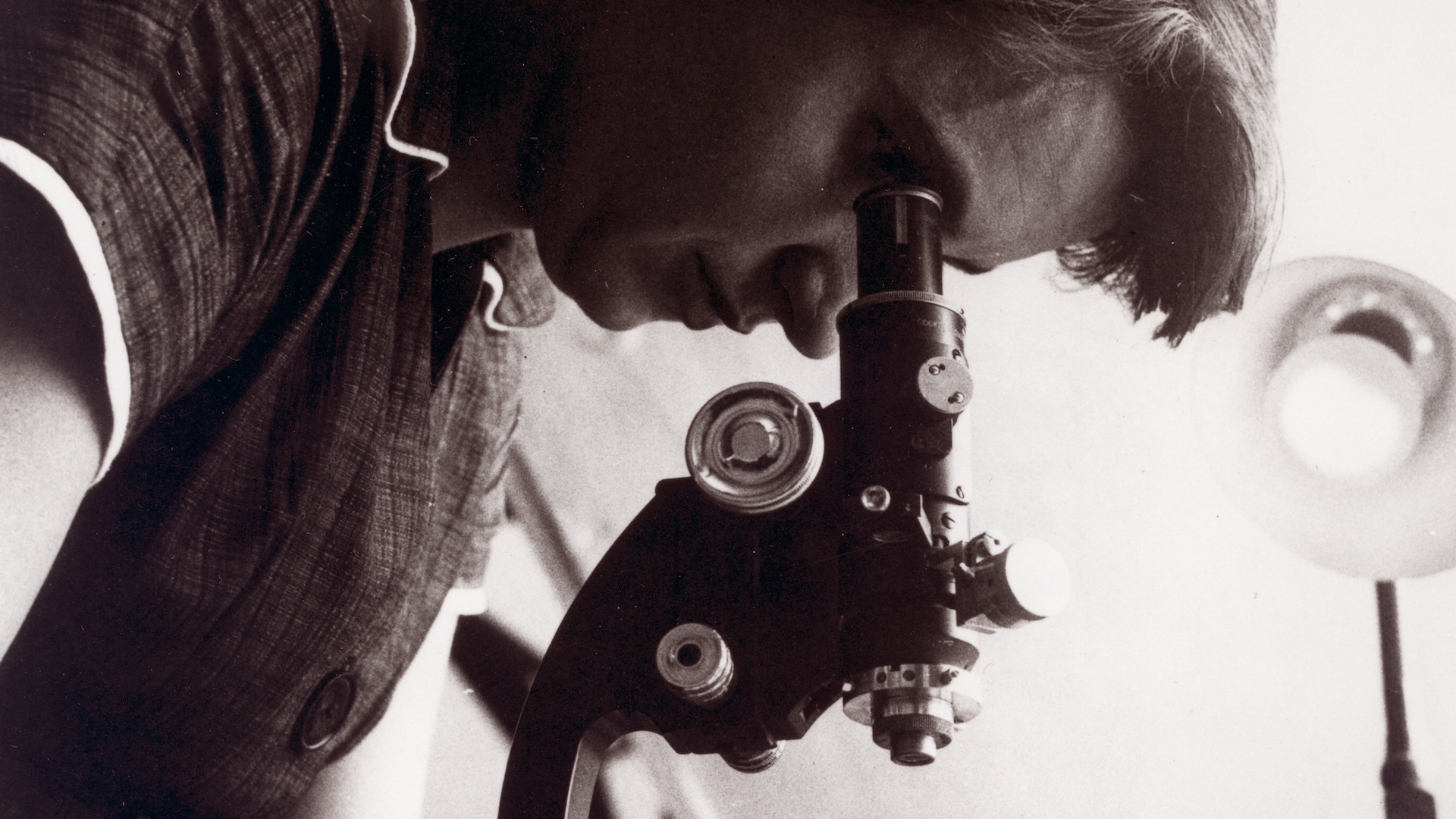
Rosalind Franklin's work was key in determining the double helix shape of DNA, but she died before the Nobel Prize in physiology or medicine was awarded to men who used her work without her permission.
Franklin grew up in pre-World War II London. She attended a private girls school known for its rigorous academics. "She was best in science, best at maths, best in everything. She expected that if she undertook to do something, she would be in charge of it," two of her school friends said in an interview with PBS' "Nova" in an episode called "The Secret of Photo 51."
Get the world’s most fascinating discoveries delivered straight to your inbox.
As a teenager, Franklin decided to be a scientist even though her father wanted her to go into social work. She got a doctorate in physical chemistry from the University of Cambridge in 1945. After working at a lab in Paris, Franklin moved to King's College London, where she had to leave for lunch every day because women were not permitted to eat in the college's cafeteria.
At King's College London, she used X-ray crystallography to take pictures of DNA and noted that one type of these images showed a helical structure with two visible strands. She called this image Photo 51. However, Franklin clashed with the lab's senior scientist, Maurice Wilkins, who called her the "Dark Lady," so she left for Birkbeck College (now called Birkbeck, University of London). During her move, Wilkins found Photo 51 and shared it with James Watson and Francis Crick, who later shared the Nobel Prize with Wilkins for determining DNA's double helix structure.
Franklin died in 1958 of ovarian cancer. It's possible her cancer was caused by her exposure to radiation during her X-ray crystallography work.
Jennifer Doudna (Born in 1964)
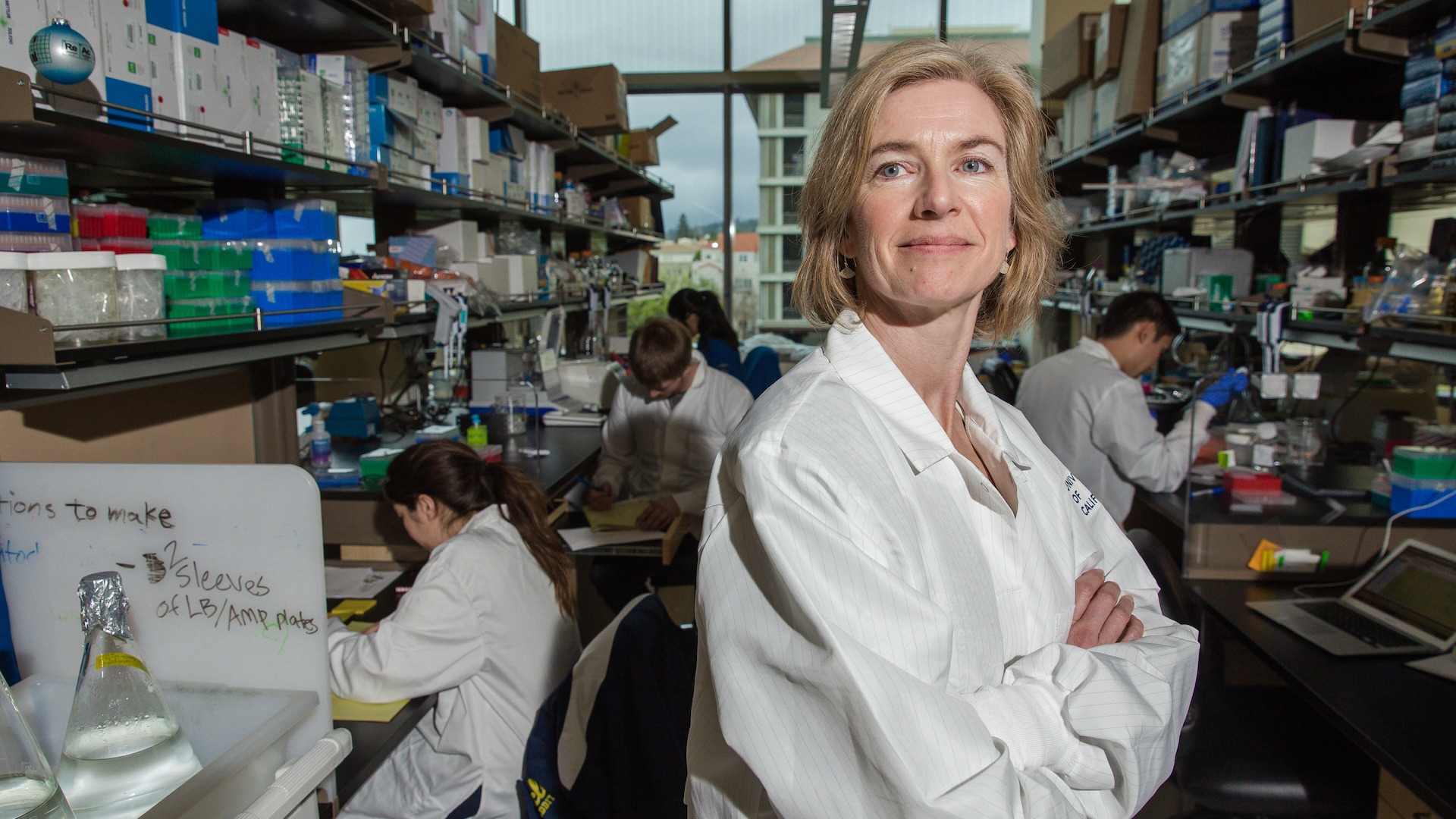
Biochemist Jennifer Doudna won the Nobel Prize in chemistry in 2020 alongside her collaborator Emmanuelle Charpentier. The two Nobel laureates helped usher in the age of CRISPR gene editing with a groundbreaking paper published in 2012. They're credited with transforming an immune system seen in bacteria into a highly precise tool that can snip specific bits of DNA from the genome. That tool, known by the shorthand CRISPR, has since been used to develop paradigm-shifting treatments for genetic disease, and its applications stretch beyond medicine, into basic research and agriculture.
Born in 1964 in Washington, D.C., Doudna now works at the University of California, Berkeley as a professor of biochemistry, biophysics and structural biology. She's the founder of the Innovative Genomics Institute, an interdisciplinary effort aimed at advancing genome engineering; educating the public about the emerging technology; and driving discussion of how to use it ethically. Doudna also co-founded and serves on the advisory panel of several companies that use CRISPR tech.
Sally Ride (1951-2012)
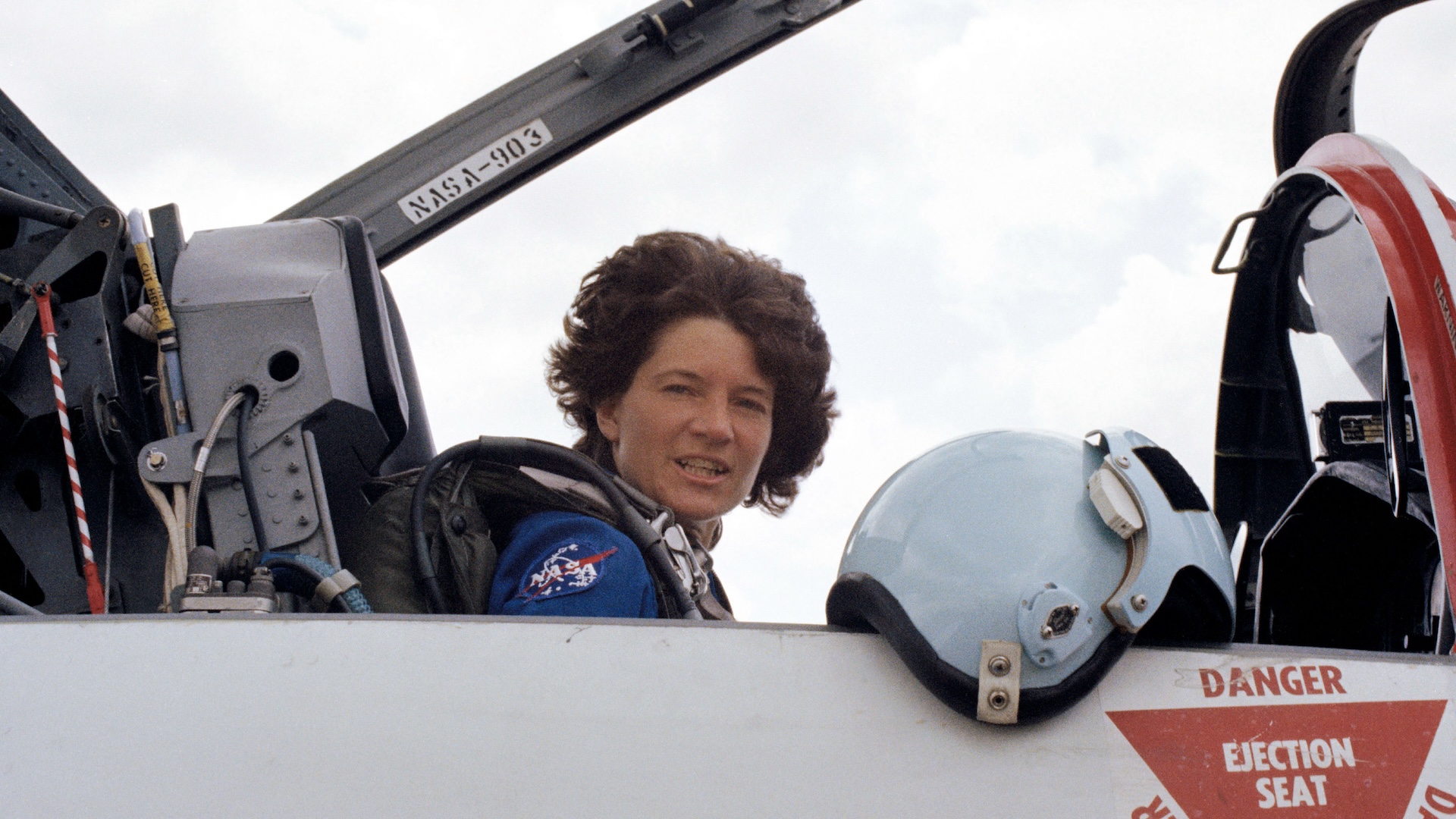
Astronaut Sally Ride became the first American woman in space when she blasted off on June 18, 1983, on the Challenger STS-7.
Ride was born in Los Angeles; in school, she enjoyed math as well as sports. She earned a full scholarship to Swarthmore College in Pennsylvania, where she became a women's college tennis champion. Because women's sports were not well supported at Swarthmore, Ride returned home to California, determined to be a professional tennis player. But once there, she ultimately transferred to Stanford University and completed bachelor's degrees in physics and English literature, followed by a master's degree and a doctoral degree in physics.
Ride joined NASA in 1978 after completing her studies at Stanford. She spent five years training for her first mission, which involved deploying communications satellites and doing scientific experiments in space. Her second shuttle mission was to help deploy the Earth Radiation Budget Satellite. During her time at NASA, Ride helped develop Canadarm, the space shuttle's robotic arm. In total, she spent more than 343 hours in space.
Following her work at NASA, in 1989, Ride joined the faculty of the University of California, San Diego, as a physics professor and director of the California Space Institute, where her research involved studying nonlinear optics and Thomson scattering, which deal with the measurement and behavior of light.
Ride led several public outreach projects for NASA over the years and created a company called Sally Ride Science, which launched science programs and publications aimed at middle-school girls. She co-authored seven books on space to encourage kids to study science.
After her death in 2012, Ride received the Presidential Medal of Freedom from Barack Obama in 2013. In 2018, Ride was featured on a first-class U.S. postage stamp, and in 2022, she was honored in the American Women quarters series, becoming the first known LGBTQ+ person to appear on U.S. currency.
Katherine Johnson (1918-2020)
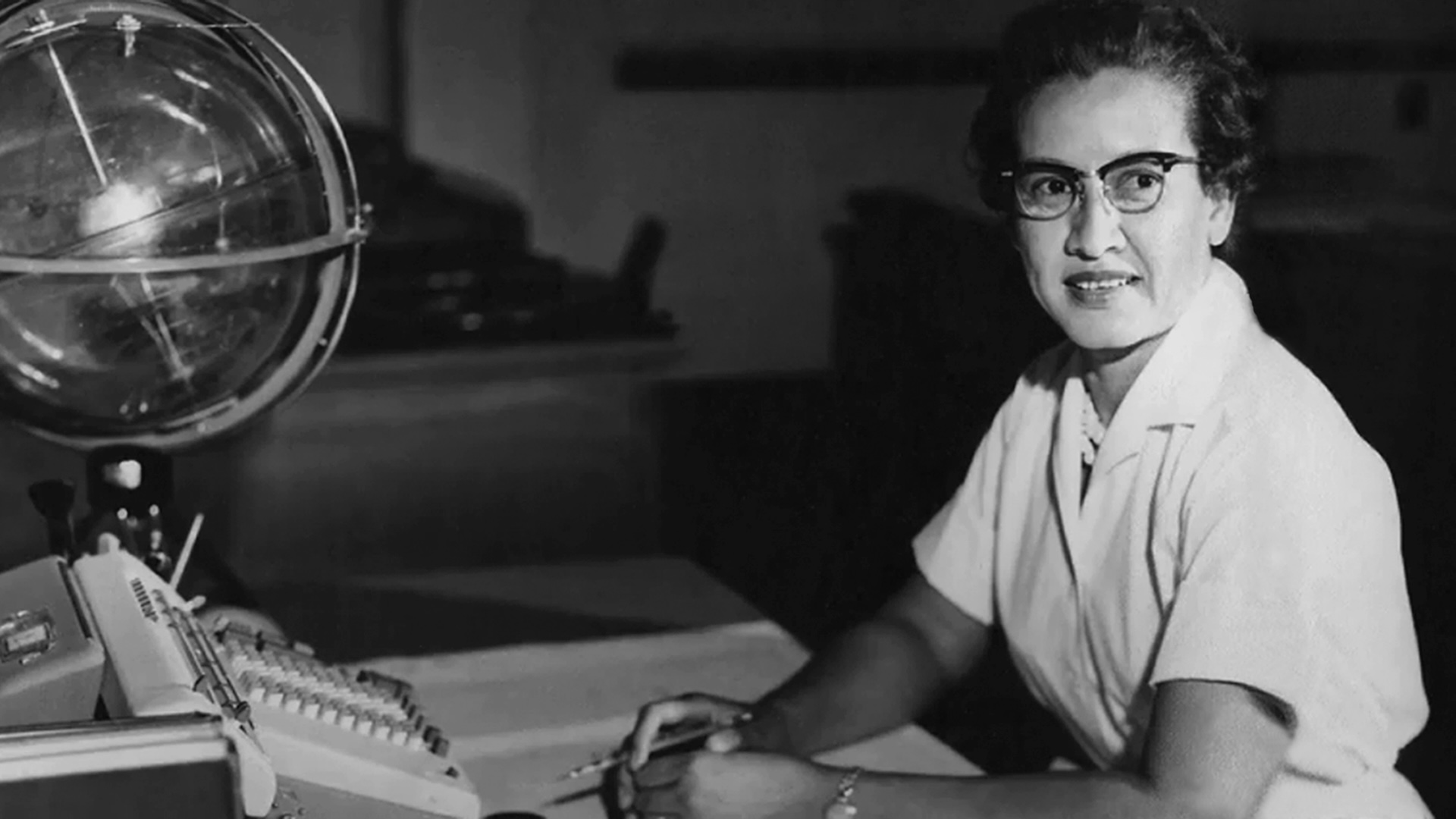
American mathematician Katherine Johnson was a "human calculator" who was instrumental in the success of the early U.S. space program. As part of a team of African American women now lauded as "Hidden Figures" in the space industry, Johnson calculated orbital mechanics for the National Advisory Committee for Aeronautics (NACA) — the predecessor of NASA — that helped put the first Americans in space.
According to NASA, Johnson calculated the trajectory for Alan Shepard, the second human and first American astronaut to reach space, in 1961. Later, after NASA began using digital computers, astronaut John Glenn requested that Johnson personally check the machine's calculations before his flight aboard Friendship 7, in which he became the first American to orbit Earth.
Johnson was born in 1918 in the small town of White Sulphur Springs, West Virginia. Fascinated by math, she started high school at the age of 10 and graduated college at 18. After years of teaching, she joined NACA as a "computer" in 1953 and continued to work for the agency, which would later become NASA, until 1986. She died in February 2020 at the age of 101, after being awarded the Presidential Medal of Freedom by Barack Obama in 2015 and receiving numerous other awards from NASA and the U.S. government. She was portrayed by Taraji P. Henson in the 2016 film "Hidden Figures" and received a standing ovation when she appeared beside Henson onstage at the 89th Academy Awards.
Mary Anning (1799-1847)
Mary Anning was a self-taught fossil hunter. She was born and raised near the cliffs of Lyme Regis in southwestern England; the rocky outcrops near her home were teeming with Jurassic fossils.
She taught herself to recognize, excavate and prepare these relics when the field of paleontology was in its infancy — and closed to women. Anning provided London paleontologists with their first glimpse of an ichthyosaur, a large marine reptile that lived alongside dinosaurs, in fossils that she discovered when she was no more than 12 years old, the University of California Museum of Paleontology (UCMP) in Berkeley, California, reported. She also found the first fossil of a plesiosaur (another extinct marine reptile). To honor Anning, scientists named a new species of ichthyosaur (Ichthyosaurus anningae) after her in 2015.
Maria Sibylla Merian (1647-1717)
Entomologist, botanist, naturalist and artist Maria Sibylla Merian created extraordinarily detailed and highly accurate drawings of insects and plants. By working with live specimens, Merian noted and revealed aspects of biology that were previously unknown to science.
Prior to Merian's investigations of insect life and her discovery that insects hatched from eggs, it was widely thought that the creatures generated spontaneously from mud. She became the first scientist to observe and document not only insect life cycles but also how the creatures interacted with their habitats, The New York Times reported in 2017.
Merian's best-known work is the 1705 book "Metamorphosis Insectorum Surinamensium," a compilation of her field research on the insects of Suriname, according to the Royal Collection Trust in the U.K.
Sylvia Earle (born 1935)
Marine biologist and oceanographer Sylvia Earle takes an immersive approach to ocean science; she is affectionately known as "Her Deepness," from the title of a 1989 profile in The New Yorker. In nearly 70 years of diving, beginning when she was 16 years old, Earle has cumulatively spent about a year underwater, she told The Telegraph in 2017.
Earle began her ocean research in the late 1960s. In 1968, she was the first woman scientist to descend in a submersible to a depth of 100 feet (31 meters) in the Bahamas, and she did so while she was four months pregnant, The Telegraph reported.
Related: In Images: Sylvia Earle's 'Searching for Wisdom' Expedition
Two years later, Earle led a team of five women "aquanauts" on a two-week mission exploring the seafloor, in the underwater laboratory Tektite II. Since then, Earle has led more than 100 expeditions in oceans around the world, and in 1990, she became the first woman to serve as chief scientist of the National Oceanic and Atmospheric Administration (NOAA).
Mae Jemison (born 1956)
In 1992, when the space shuttle Endeavour blasted off, NASA astronaut Mae Jemison became the first African American woman to reach space. But astronaut is just one of her many titles. Jemison is also a physician, a Peace Corps volunteer, a teacher, and a founder and president of two technology companies, according to Space.com, a Live Science sister site.
Jemison was born in Decatur, Alabama, on Oct. 17, 1956. When she was 3 years old, she moved with her family to Chicago. At age 16, the aspiring scientist attended Stanford University, where she earned degrees in chemical engineering and African and African American studies. She got her doctorate in medicine from Cornell University in New York state in 1981.
After training with NASA, Jemison and six other astronauts orbited Earth 126 times on the Endeavour. During her 190 hours in space, Jemison helped carry out two experiments on bone cells.
Jemison is also a polyglot, speaking English, Russian, Japanese and Swahili, and she even has a Lego minifigure made in her honor.
Maria Goeppert Mayer (1906-1972)
In 1963, theoretical physicist Maria Goeppert Mayer became the second woman to win a Nobel Prize in physics, 60 years after Marie Curie won the award.
Goeppert Mayer was born on June 28, 1906, in Kattowitz, Germany (now Katowice, Poland). Although women from her generation rarely attended university, Goeppert Mayer went to the University at Göttingen in Germany, where she plunged into the relatively new and exciting field of quantum mechanics.
By 1930, at age 24, she had earned her doctorate in theoretical physics. She married the American Joseph Edward Mayer and moved with him so he could work at Johns Hopkins University in Baltimore. The university wouldn't employ her, given that it was the Depression, but she continued working on physics anyway.
When the couple moved to Columbia University in New York, she worked on the separation of uranium isotopes for the atomic bomb project, according to Britannica. Her later research at the University of Chicago on the architecture of nuclei — how different orbital levels held different components of the nucleus in atoms — won her a Nobel Prize that she shared with two other scientists.
Rita Levi-Montalcini (1909-2012)
Rita Levi-Montalcini's father discouraged her from pursuing a higher education, because he held Victorian notions and thought that women should embrace the full-time job of being a wife and mother. But Levi-Montalcini pushed back, and eventually, her work on nerve growth factor would earn her the Nobel Prize in physiology or medicine.
The road to success was not easy. Born in Italy in 1909, Levi-Montalcini made it to medical school, where she graduated summa cum laude in medicine and surgery in 1936. Then, she began to study neurology and psychiatry, but her research was interrupted by World War II. Undeterred, she set up a research lab in her home, where she studied development in chick embryos until she had to abandon her work and go into hiding in Florence, Italy.
After the war, she accepted a position at Washington University in St. Louis, where she and her colleagues found that a substance from a mouse tumor spurred nerve growth when it was put into chick embryos. Her lab colleague Stanley Cohen was able to isolate the substance, which the two researchers called nerve growth factor. He shared the Nobel Prize with Levi-Montalcini in 1986.
Maryam Mirzakhani (1977-2017)
Maryam Mirzakhani was a mathematician known for solving hard, abstract problems in the geometry of curved spaces. She was born in Tehran, Iran, and did her most important work as a professor at Stanford University, between 2009 and 2014.
Her work helped explain the nature of geodesics, straight lines across curved surfaces. It had practical applications for understanding the behavior of earthquakes and turned up answers to long-standing mysteries in the field.
In 2014, she became the first — and still only — woman to win the Fields Medal, the most prestigious prize in mathematics. Each year, the Fields Medal is awarded to a handful of mathematicians under the age of 40 at the International Mathematical Union's International Congress of Mathematicians.
Mirzakhani received her medal one year after she was diagnosed with breast cancer, in 2013. She died from cancer on July 14, 2017, at age 40. Mirzakhani continues to influence her field, even after her death; in 2019, her colleague Alex Eskin won the $3 million Breakthrough Prize in mathematics for revolutionary work he did with Mirzakhani on the "magic wand theorem." Later that year, the Breakthrough Prize endowed a new award in Mirzakhani's honor that would go to promising young female mathematicians.
Emmy Noether (1882-1935)
Emmy Noether was one of the great mathematicians of the early 20th century, and her research helped lay the groundwork for both modern physics and two key fields of mathematics.
Noether, a Jewish woman, did her most important work as a researcher at the University of Göttingen in Germany between the late 1910s and early 1930s.
Her most famous work is called Noether's theorem, which has to do with symmetry; it laid the groundwork for further work that became necessary for modern physics and quantum mechanics.
Later, she helped build the foundations of abstract algebra — the work for which she is most highly regarded among mathematicians — and made foundational contributions to a number of other fields.
In April 1933, Adolf Hitler expelled Jews from the universities. For a time, Noether saw students in her home, before following other Jewish German scientists, like Albert Einstein, to the United States. She worked at both Bryn Mawr College in Pennsylvania and Princeton University before dying in April 1935.
Susan Solomon (born 1956)
Susan Solomon is an atmospheric chemist, author and professor at the Massachusetts Institute of Technology who for decades worked at NOAA. During her time at NOAA, she was the first to propose, with input from her colleagues, that chlorofluorocarbons (CFCs) were responsible for the Antarctic hole in the ozone layer.
She led a team in 1986 and 1987 to McMurdo Sound on the southern continent, where the researchers gathered evidence that the chemicals, released by aerosols and other consumer products, interacted with ultraviolet light to remove ozone from the atmosphere.
This led to the U.N. Montreal Protocol, which went into effect in 1989, banning CFCs worldwide. It is considered one of the most successful environmental projects in history, and the hole in the ozone layer has shrunk considerably since the protocol's adoption.
Virginia Apgar (1909-1974)
Dr. Virginia Apgar was a pioneer in the medical fields of anesthesiology and obstetrics, best known for her invention of the Apgar score, a simple and quick method to assess the health of newborns.
Apgar received her medical degree in 1933 and planned to become a surgeon. But there were limited career opportunities for women in surgery at the time, so she switched to the emerging field of anesthesiology. She would go on to become a leader in the field and the first woman to be named a full professor at Columbia University's College of Physicians and Surgeons, according to the National Institutes of Health.
One of Apgar's areas of research investigated the effects of anesthesia used during childbirth. In 1952, she developed the Apgar scoring system, which assesses the vital signs of newborns in the first minutes of life. The score is based on measures of the newborn's heart rate, breathing effort, muscle tone, reflexes and color, with lower scores indicating that the baby needs immediate medical attention. The system reduced infant mortality and helped give rise to the field of neonatology, and it is still used today.
Brenda Milner (born 1918)
Sometimes called the "founder of neuropsychology," Brenda Milner has made groundbreaking discoveries about the human brain, memory and learning.
Milner is best known for her work with "Patient H.M.," a man who lost the ability to form new memories after undergoing brain surgery for epilepsy. Through repeated studies in the 1950s, Milner found that Patient H.M. could learn new tasks, even if he had no memory of doing it. This led to the discovery that there are multiple types of memory systems in the brain, according to the Canadian Association for Neuroscience. Milner's work played a major role in the scientific understanding of the functions of different areas of the brain, such as the role of the hippocampus and frontal lobes in memory and how the two brain hemispheres interact.
Her work continues to this day. At age 104, Milner is still a professor in the Department of Neurology and Neurosurgery at McGill University in Montreal, according to the Montreal Gazette.
Karen Uhlenbeck (born 1942)
In 2019, American mathematician Karen Uhlenbeck became the first woman to receive the Abel Prize, one of the most prestigious math awards. Uhlenbeck won for her groundbreaking contributions to mathematical physics, analysis and geometry.
She is considered one of the pioneers in the field of geometric analysis, which is the study of shapes using partial differential equations (the derivatives, or rates of change, of multiple different variables, often labeled x, y and z). And the methods and tools that she developed are being used widely throughout the field.
Related: The 11 Most Beautiful Mathematical Equations
Uhlenbeck made major contributions to gauge theories, a set of quantum physics equations that define how subatomic particles should behave. She also figured out the shapes that soap films can take in higher-dimensional curved spaces.
About the Abel Prize, her longtime friend Penny Smith, a mathematician at Lehigh University in Pennsylvania, said, "I can't think of anyone who deserves it more. ... She really is not just brilliant but creatively brilliant, amazingly creatively brilliant."
Jane Goodall (1934-2025)
Jane Goodall was a legendary primatologist whose work with wild chimpanzees changed the way we see these animals and their relationship with humans.
In 1960, Goodall began her study of chimpanzees in the Gombe forest of Tanzania. Immersing herself with the animals, she made several revolutionary discoveries, including that chimpanzees make and use tools — a trait that was previously thought to be uniquely human, according to National Geographic. She also found that the animals displayed complex social behaviors, such as altruism and ritualized behaviors, as well as gestures of affection.
In 1965, Goodall earned a doctorate in ethology from the University of Cambridge, becoming one of only a handful of people ever allowed to study at the university at the graduate level without first receiving an undergraduate degree. In 1977, Goodall founded the Jane Goodall Institute to support research and protection of chimpanzees. Goodall died in October, 2025, at the age of 91.
Ada Lovelace (1815-1852)
Ada Lovelace was a 19th century self-taught mathematician and is thought of by some as the "world's first computer programmer."
Lovelace grew up fascinated by math and machinery. At age 17, she met English mathematician Charles Babbage at an event where he was demonstrating a prototype for a precursor to his "analytical engine," the world's first computer. Fascinated, Lovelace decided to learn everything she could about the machine.
In 1837, Lovelace translated a paper written about the analytical engine from French. Alongside her translation, she published her own detailed notes about the machine. The notes, which were longer than the translation itself, included a formula she created for calculating Bernoulli numbers. Some say that this formula can be thought of as the first computer program ever written.
Lovelace is now a major symbol for women in science and engineering. Her day is celebrated on the second Tuesday of every October.
Dorothy Hodgkin (1910-1994)
Dorothy Hodgkin, an English chemist, won the Nobel Prize in chemistry in 1964 for figuring out the molecular structures of penicillin and vitamin B12.
She became very interested in crystals and chemistry at age 10, and as an undergraduate at the University of Oxford, she became one of the first to study the structure of organic compounds using a method called X-ray crystallography. In her graduate studies at the University of Cambridge, she extended the work of British physicist John Desmond Bernal on biological molecules and helped to make the first X-ray diffraction study of the stomach enzyme pepsin, according to Britannica.
When she was offered a temporary research fellowship in 1934, she returned to Oxford, staying there until she retired. She established an X-ray lab at Oxford's Museum of Natural History, where she began her research on the structure of insulin.
In 1945, Hodgkin successfully described the arrangement of the atoms in penicillin's structure, and in the mid-1950s, she discovered the structure of vitamin B12. In 1969, nearly four decades after her first attempt, she determined the chemical structure of insulin.
Caroline Herschel (1750-1848)
Caroline Herschel, born in Hannover, Germany, in 1750, might owe her reputation as the world's first professional female astronomer to a bad case of typhus. At 10 years old, Caroline's growth was permanently stunted by the illness — her height peaked at 4 feet, 3 inches (130 centimeters), according to Britannica — as were her marriage prospects. Doomed to be an old maid, as far as her parents were concerned, Herschel's education was abandoned for housework, until her brother, William Herschel, spirited her away to Bath, England, in 1772.
William Herschel was a musician and astronomer, and he tutored his sister in both vocations. Eventually, Caroline Herschel graduated from grinding and polishing her brother's telescope mirrors to honing his equations and making celestial discoveries all her own. While assisting her brother in his role as court astronomer to King George III in 1783, Caroline Herschel detected three previously undiscovered nebulas; three years later, she became the first woman to discover a comet.
In 1787, the king awarded Caroline Herschel an annual pension of 50 pounds, making her the first professional female astronomer in history. She cataloged more than 2,500 nebulas before her death, in 1848, and was awarded gold medals from both the Royal Astronomical Society and the King of Prussia for her research.
Sophie Germain (1776-1831)
Sophie Germain was a French mathematician best known for her discovery of a special case in Fermat's last theorem that is now called Germain's theorem and for her pioneering work in the theory of elasticity.
Germain's fascination with math began when she was only 13 years old. As a young woman in the early 1800s, Germain's interest in science and mathematics was not well received by her parents, and she was not allowed to receive a formal education in the subject.
So Germain studied behind her parents' back at first and used a male student's name to submit her work to the math instructors she admired. The instructors were impressed, even when they found out that Germain was a woman, and they took her under their wing as much as they could at the time, according to Louis L. Bucciarelli and Nancy Dworsky's book "Sophie Germain: An Essay in the History of the Theory of Elasticity" (Springer Netherlands, 1980).
In 1816, Germain won a contest to come up with a mathematical explanation for a set of unusual images created by German physicist Ernst Chladni. It was Germain's third try to solve the puzzle, which she did by correcting her previous errors. Although her third solution still contained minor discrepancies, the judges were impressed and deemed it worthy of a prize.
Around 1820, Germain wrote to her mentors, Carl Friedrich Gauss and Joseph-Louis Lagrange, about how she was working to prove Fernat's last theorem, according to Agnes Scott College in Georgia. Germain's efforts eventually led to what is now known as Sophie Germain's theorem.
Patricia Bath (1942-2019)
Dr. Patricia Bath was an American ophthalmologist and laser scientist. Bath became the first female ophthalmologist to be appointed to the faculty of the University of California, Los Angeles (UCLA) School of Medicine Jules Stein Eye Institute, in 1974; the first woman to chair an ophthalmology residency program in the United States, in 1983; and the first female African American physician to receive a patent for a medical invention, in 1986.
Bath was inspired at a young age to pursue a career in medicine after learning of Dr. Albert Schweitzer's service to the people of what is now Gabon, in Africa, in the early 1900s, according to the U.S. National Library of Medicine.
While completing her medical training in New York City in 1969, Bath noticed that there were far more blind or visually impaired patients at the eye clinic in Harlem compared with the eye clinic at Columbia University. So she conducted a study and found that the prevalence of blindness in Harlem was a result of the lack of access to eye care. To solve the problem, Bath proposed a new discipline, community ophthalmology, which trains volunteers to offer primary eye care to underserved populations. The concept is now employed worldwide and has saved the sight of thousands who would have otherwise gone undiagnosed and untreated.
As a new female and Black faculty member at UCLA, Bath experienced numerous instances of sexism and racism. In 1977, she co-founded the American Institute for the Prevention of Blindness, an organization whose mission is to protect, preserve and restore sight.
Bath's research on cataracts led to her invention of a new method and device to remove cataracts, called the laserphaco probe. She earned a patent for the technology in 1986. Today, the device is used worldwide.
Rachel Carson (1907-1964)
Rachel Carson was an American biologist, conservationist and science writer. She is best known for her book "Silent Spring" (Houghton Mifflin, 1962), which describes the harmful effects of pesticides on the environment. The book eventually led to the nationwide ban of DDT and other harmful pesticides, according to the National Women's History Museum.
Carson studied at the Woods Hole Oceanographic Institution in Massachusetts and received her master's degree in zoology from Johns Hopkins University in 1932. In 1936, Carson became the second woman hired by the U.S. Bureau of Fisheries (which later became the U.S. Fish and Wildlife Service), where she worked as an aquatic biologist, according to the U.S. Fish and Wildlife Service. Her research allowed her to visit many waterways around the Chesapeake Bay region, where she first began to document the effects of pesticides on fish and wildlife.
Carson was a talented science writer, and the Fish and Wildlife Service eventually made her the editor in chief of all its publications. After the success of her first two books on marine life, "Under the Sea Wind" (Simon and Schuster, 1941) and "The Sea Around Us" (Oxford, 1951), Carson resigned from the Fish and Wildlife Service to focus more on writing.
With the help of two other former employees from the Fish and Wildlife Service, Carson spent years studying the effects of pesticides on the environment across the United States and Europe. She summarized her findings in her fourth book, "Silent Spring," which spurred enormous controversy. The pesticide industry tried to discredit Carson, but the U.S. government ordered a complete review of its pesticide policy, and as a result, banned DDT. Carson has since been credited with inspiring Americans to consider the environment.
Ingrid Daubechies (born 1954)
The honors and scientific citations Ingrid Daubechies would make a CVS receipt look small: Daubechies, born in 1954 in Brussels, where she earned both her bachelor's and doctorate degrees in physics, was drawn to math from an early age. In addition to having an interest in how things worked, she also loved figuring out "why certain mathematical things were true (like the fact that a number is divisible by 9 if, when you add all its digits together, you get another number divisible by 9," she once said, according to a short bio on the website of the University of St. Andrews in Scotland. She also loved sewing doll clothes — because, of course, of math. "It was fascinating to me that by putting together flat pieces of fabric one could make something that was not flat at all, but followed curved surfaces." And she recalls falling asleep while computing powers of 2 in her head, according to the St Andrews bio.
Perhaps the most important number to her would be 1987. That was not just the year she got married but also when she made a major mathematical breakthrough in the field of wavelets; these are akin to "miniwaves," because rather than going on forever (think about sine and cosine), they quickly fade, with the wave heights starting at zero, rising and then quickly dropping back to zero.
She discovered so-called orthogonal wavelets (now called Daubechies wavelets), which are used in JPEG 2000 image compression and even in some models used for search engines.
Currently, she is a professor of mathematics and electrical and computer engineering at Duke University, where she studies wavelet theory, machine learning and other fields at the intersection of physics, math and engineering.
Marie Curie (1867-1934)
Marie Curie broke ground not only for becoming the first woman to win a Nobel Prize but also for being a remarkable scientist whose impact on the world was profound and long-lasting. She is remembered chiefly for her discovery of radium and polonium, and her contributions to the study of radioactivity.
But Curie is also known for a string of other achievements, according to the Nobel Prize website and Britannica. In 1903, for example, Curie became the first woman in France to earn a doctorate in physics. She was the first woman to become a professor at the University of Paris and teach classes at the Sorbonne. She pioneered the use of radium in treating cancer tumors. In 1911, she received a second Nobel Prize, this time in chemistry, in recognition of her work in radioactivity. She was also responsible for establishing the use of X-ray machines in World War I, and for creating two important medical institutes — one in Poland and one in France.
Born Marie Sklodowska in Warsaw, Poland, in 1867, she moved to Paris in 1891, where she met and married Pierre Curie, a French physicist with whom she shared (along with physicist Henri Becquerel) her first Nobel Prize. She studied at the University of Paris, earning her doctorate there in 1903. Despite working in relative obscurity during her early years, her work on radioactive substances gradually drew her national and international attention; by the end of her life, she was famed throughout the world and honored for her many achievements.
She died in 1934 because of illnesses brought on by her long exposure to radiation and was buried at the famous Panthéon in Paris.
Barbara McClintock (1902-1992)
Barbara McClintock was an American scientist whose trailblazing studies in cytogenetics — the study of chromosomes and their genetic expression — garnered her the 1983 Nobel Prize in physiology or medicine. Today, her theories, especially about "jumping genes," are fundamental to a precise understanding of genetics.
But McClintock almost missed out on pursuing a career as a scientist. Although she wanted to attend Cornell University, her mother was reluctant to send her there, fearing that the move would ruin her marriage prospects, according to the Nobel Prize website. McClintock's father, a physician, came to her rescue and allowed her to attend.
At Cornell, McClintock studied genetics, which, at the time, was a relatively new field of study and one that very few women pursued. She followed this area of study as she continued in her graduate and postgraduate years. She taught at the University of Missouri for a while before finding a permanent position as a researcher for Cold Spring Harbor Laboratory, a New York research facility funded by the Carnegie Institution.
McClintock's studies in genetics remain her greatest legacy. Her primary area of focus was looking at how genes controlled the color patterns of maize kernels. She discovered the ability of a DNA sequence to change position on a genome, causing traits to be "switched" on or off, according to a 2012 article in the journal Proceedings of the National Academy of Sciences. This idea came to be known as genetic transposition, or "jumping genes." The finding transformed ideas about genes, which, at the time, were considered unchangeable, stable entities that could only be passed along from generation to generation. But by the 1960s, the larger scientific community had validated her findings and observations.
Chien-Shiung Wu (1912-1997)
Chien-Shiung Wu was a Chinese American physicist famous for her work on weak subatomic interactions — the interactions responsible for radioactive decay. She was involved in the top-secret Manhattan Project during World War II, the American-led effort to develop the atomic bomb.
Wu was born in Liuhe, China, to parents who encouraged her scientific aspirations, according to the National Park Service. She excelled in math and science and attended National Central University, earning a degree in physics. She continued her studies at the University of California, Berkeley, finishing her doctorate in 1940. Rather than returning to China, Wu remained in the United States, taking teaching posts at Smith College and later at Princeton University, where she became the first female faculty member hired by the university.
With the advent of World War II, however, Wu received a position at Columbia University, which involved work on the Manhattan Project. Her research focused on producing bomb-grade uranium by identifying a process using gaseous infusion to separate uranium metal, according to the National Women's History Museum in Virginia. This was a crucial step toward transforming a bomb into an atomic bomb.
After the war, Wu remained at Columbia, eventually becoming the first woman to hold a tenured faculty position in the university's physics department. She retired in 1981 and died in New York City in 1997. In 2021, the U.S. Postal Service honored Wu by putting her on a postage stamp.
Melba Roy Mouton (1929-1990)
Melba Roy Mouton was an American mathematician and computer programmer who made groundbreaking contributions to NASA. Mouton received an Apollo Achievement Award for her part in the successful Apollo 11 moon landing on July 20,1969.
Mouton was born in 1929 in Fairfax, Virginia. She was a budding mathematical prodigy at school and went on to earn both a bachelor's and a master's degree in math from Howard University. She worked for the Army Map Service and the Census Bureau before moving to NASA in 1959. There, she first became head mathematician at the Goddard Space Flight Center and oversaw the team tracking satellites in orbit.
Two years later, Mouton joined the Mission and Trajectory Analysis Division as head programmer, where she was responsible for coding computer programs to track NASA spacecraft. She eventually became assistant chief of research programs for the Trajectory and Geodynamics Division at Goddard. Mouton retired in 1973 and died in 1990, at the age of 61, due to brain cancer.
In 2023, the International Astronomical Union named a gigantic 20,000-foot-tall (6,000 m) lunar mountain "Mons Mouton" in her honor. The feature is one of the 13 candidate landing regions for NASA's Artemis 3 mission, which aims to send astronauts — including the first woman and person of color — to the moon.
Alice Ball (1892-1916)
Alice Ball was an American chemist who, at 23 years old, pioneered a treatment for Hansen's disease, also known as leprosy, that remained in use until the 1940s. She was both the first woman and the first African-American to earn a master's degree from the University of Hawaii, and became the first female chemistry professor at the university.
Ball was born on July 24,1892, in Seattle, Washington. She earned degrees in chemistry and pharmaceutical chemistry from the University of Washington. She moved to Hawaii and completed her master's after writing a thesis on the chemical properties of chaulmoogra oil, a substance derived from the seeds of a tropical evergreen tree (Hydnocarpus wightianus), which was already being used to heal leprosy. At 23 years old, Ball revolutionized the treatment by creating a water-soluble solution that could be safely injected, known as the "Ball Method."
Ball fell ill shortly after making the discovery and died in 1916 of unknown causes. Arthur L. Dean, at the time the president of the University of Hawaii, continued her pioneering work and made the treatment widely accessible. He gave Ball no credit for the technique, however, and renamed it the "Dean Method."
Her name might have been lost to history but her thesis supervisor, Dr. Harry T. Hollmann, explicitly gave her the credit for the chaulmoogra solution in a 1922 medical journal. The University of Hawaii did not recognize Ball's achievements until 2000, when the institution finally placed a plaque in her honor under its only chaulmoogra tree and declared Feb. 29 Alice Ball day.
Originally published on March 8, 2020. Updated on March 18, 2022 by Tom Garlinghouse, March 7, 2023 by Sascha Pare, and Feb. 11, 2025 by Brandon Specktor, Kristina Killgrove, Laura Geggel and Nicoletta Lanese.
Tom Garlinghouse is a journalist specializing in general science stories. He has a Ph.D. in archaeology from the University of California, Davis, and was a practicing archaeologist prior to receiving his MA in science journalism from the University of California, Santa Cruz. His work has appeared in an eclectic array of print and online publications, including the Monterey Herald, the San Jose Mercury News, History Today, Sapiens.org, Science.com, Current World Archaeology and many others. He is also a novelist whose first novel Mind Fields, was recently published by Open-Books.com.
You must confirm your public display name before commenting
Please logout and then login again, you will then be prompted to enter your display name.



